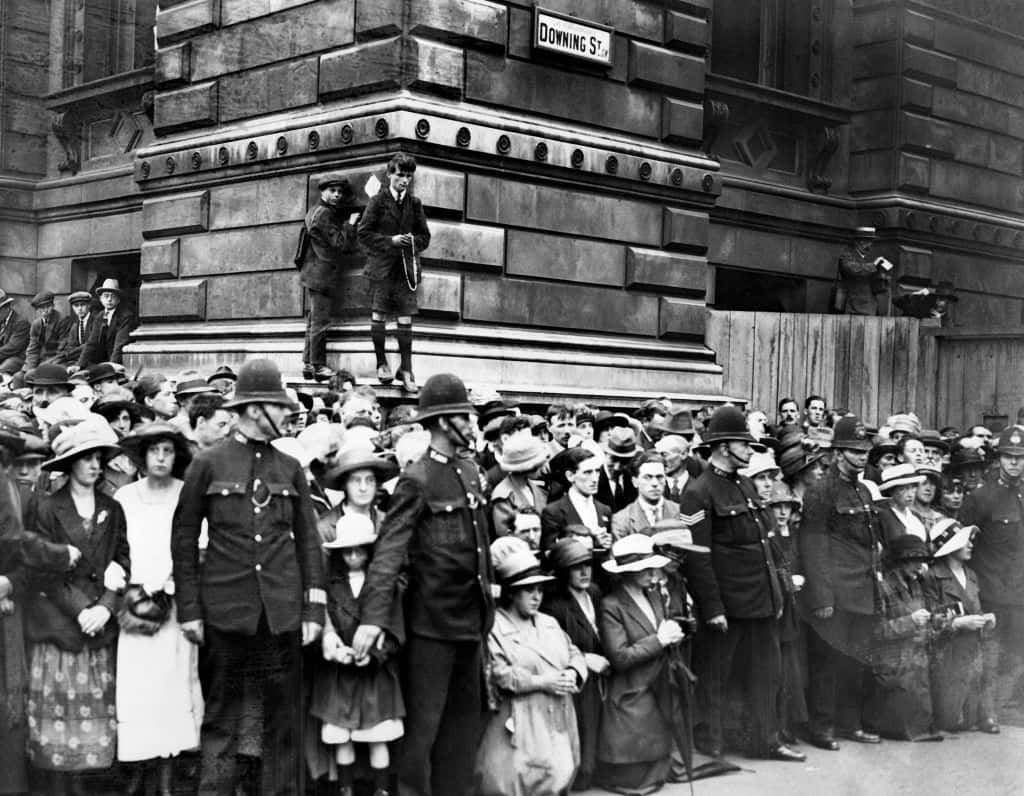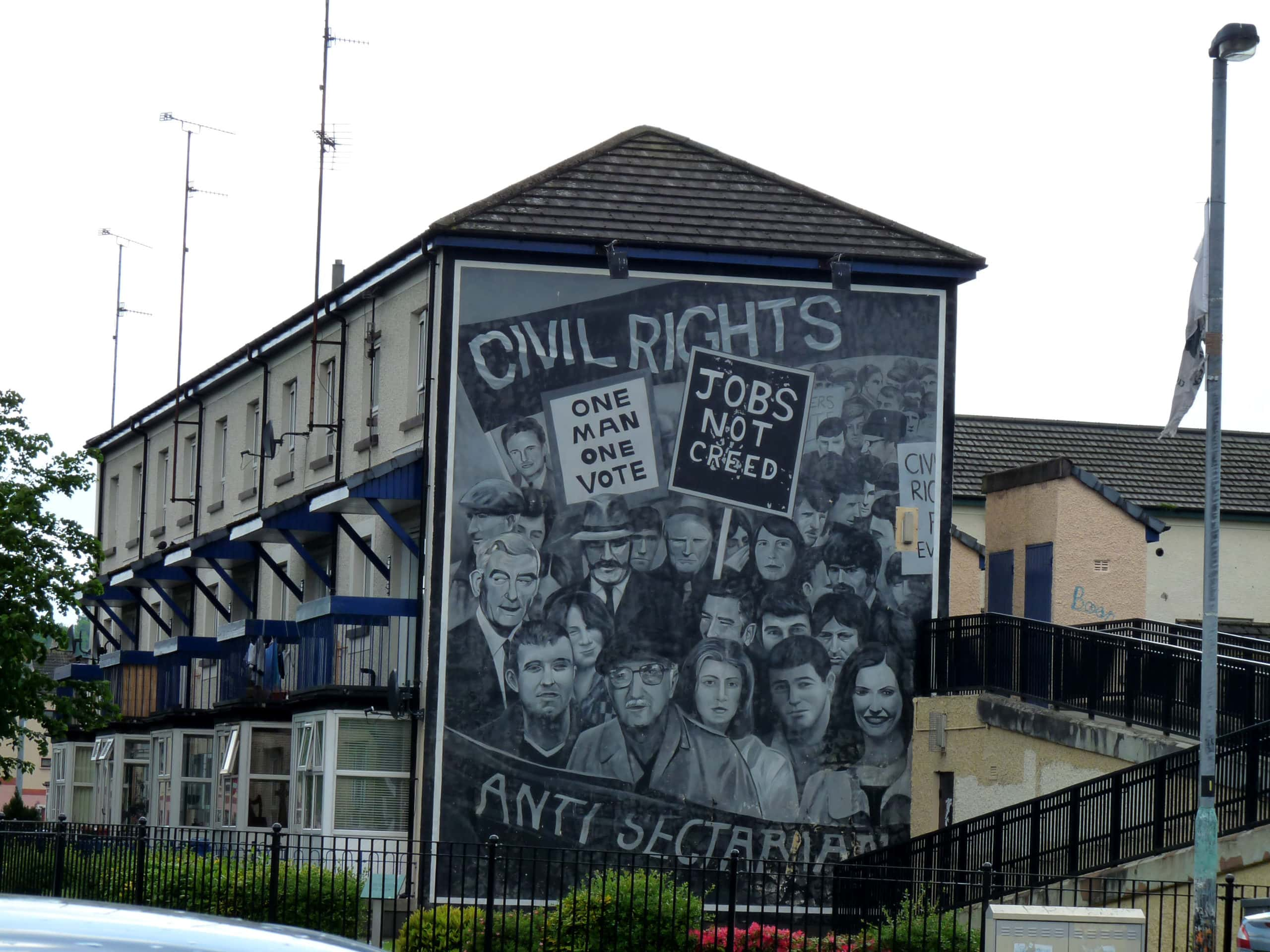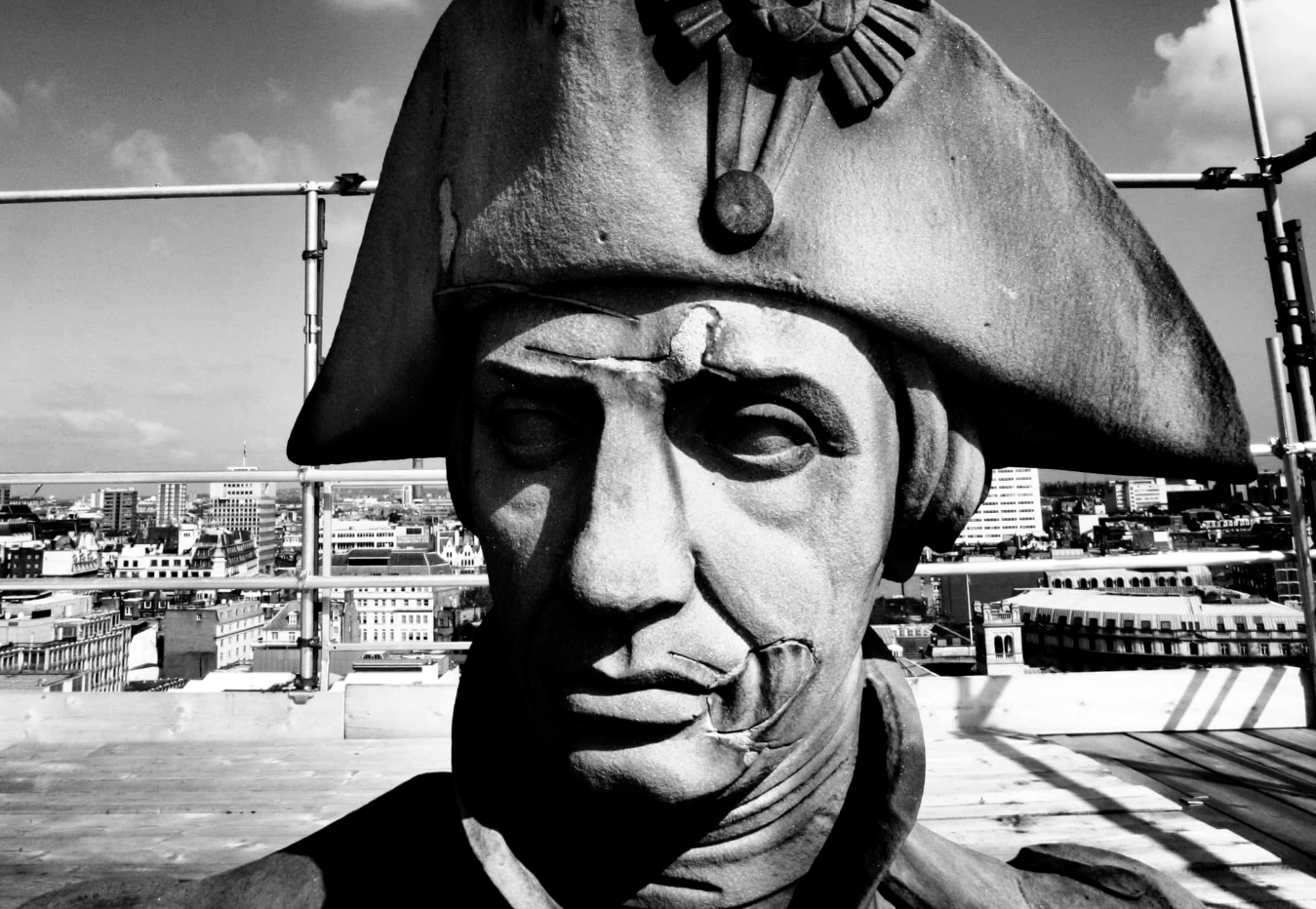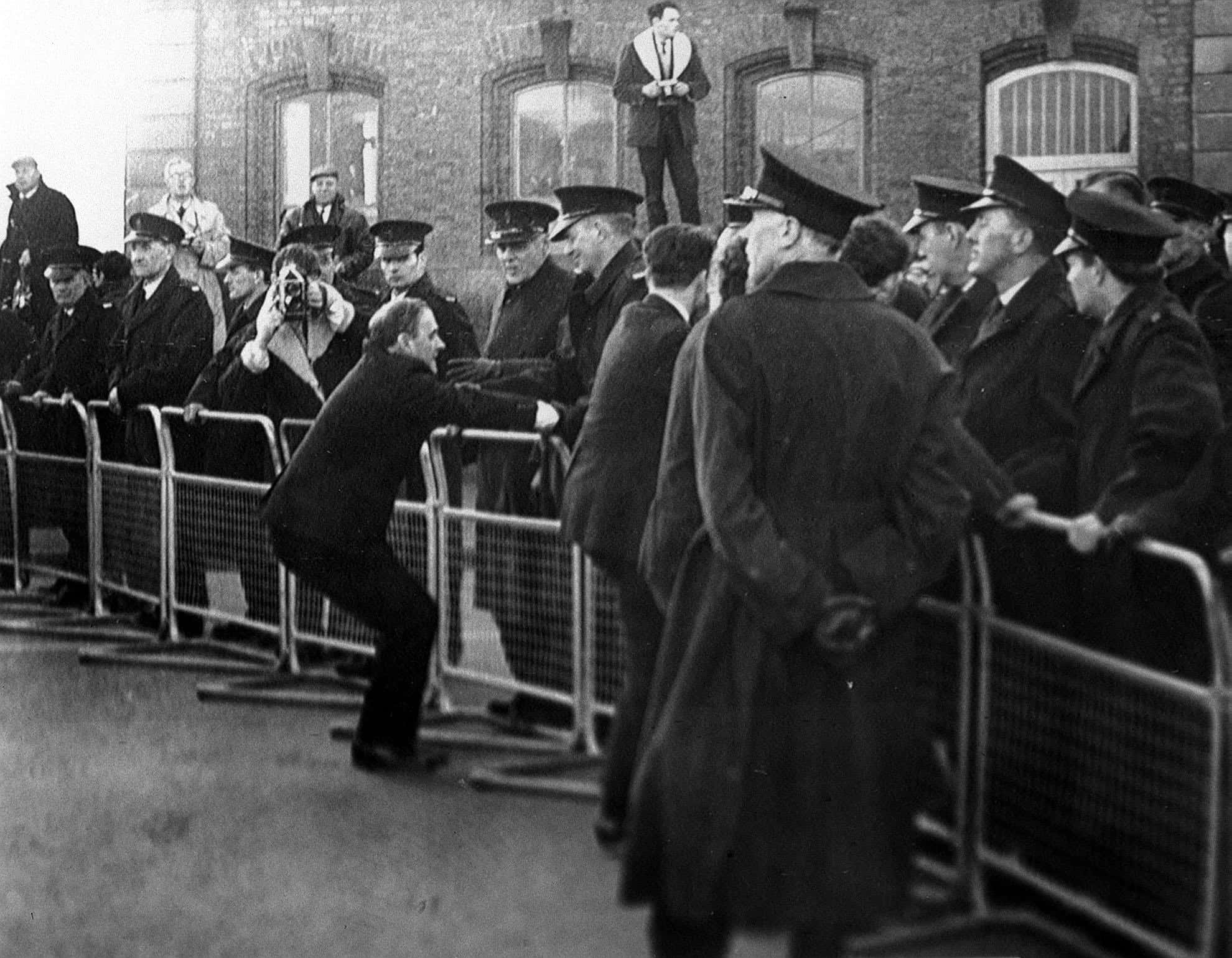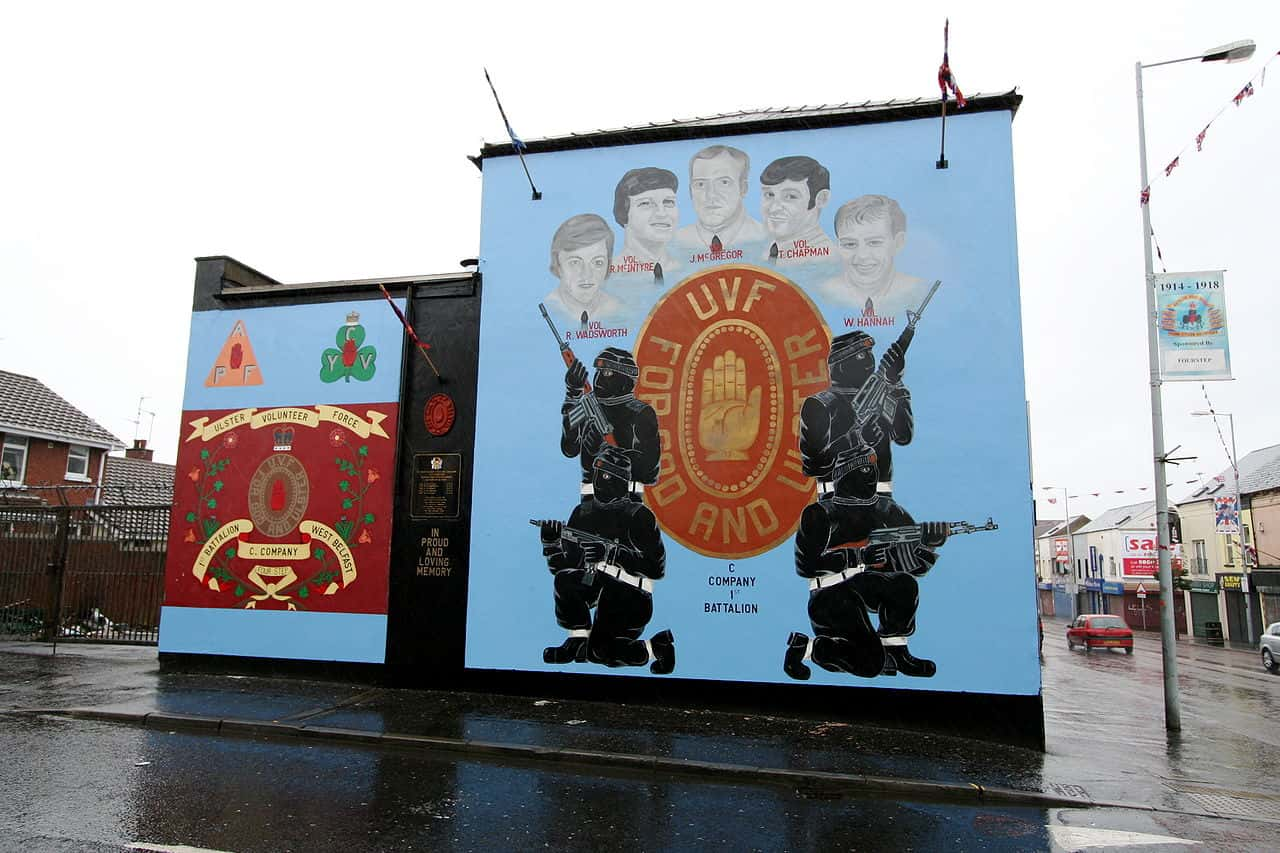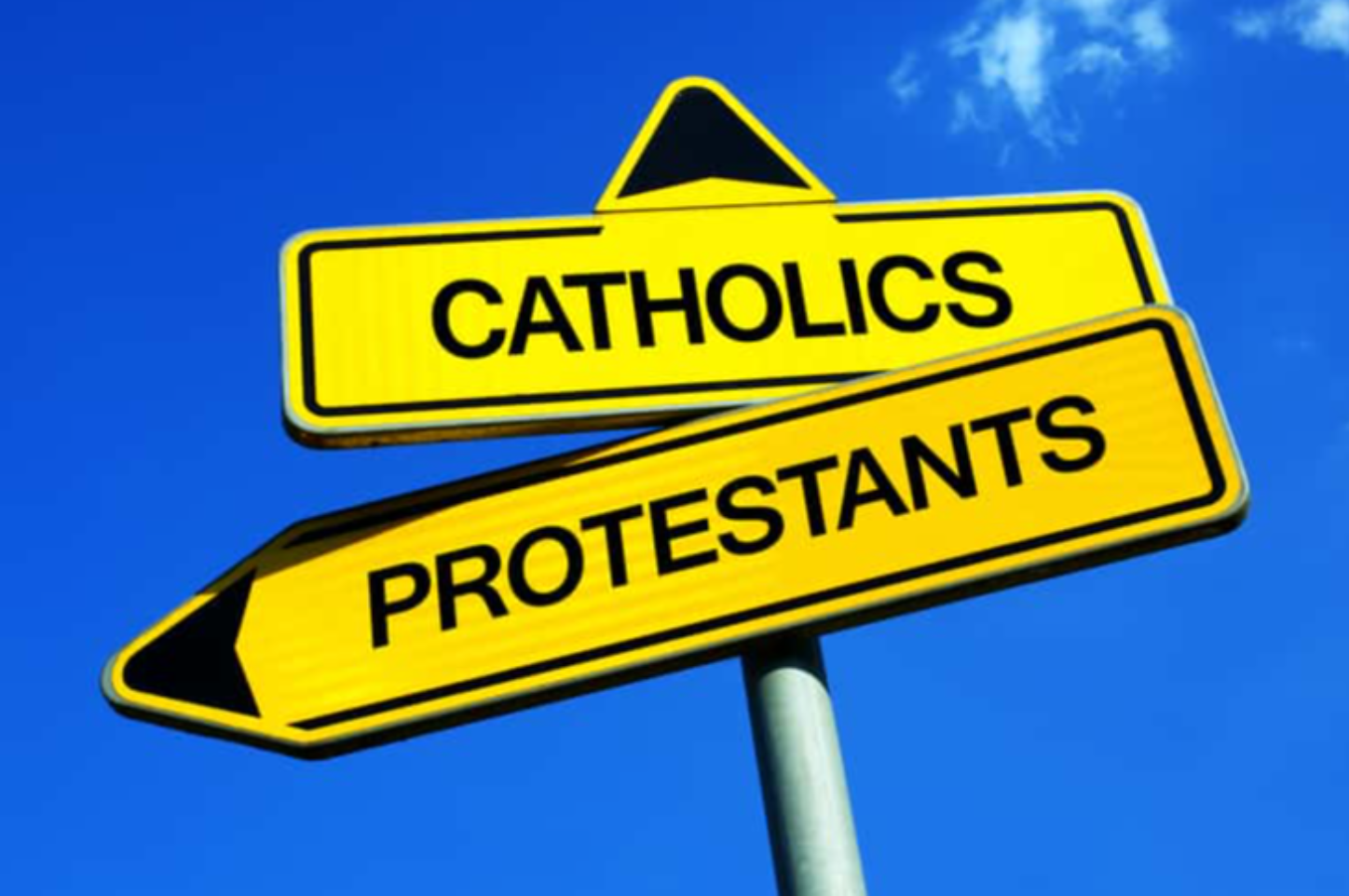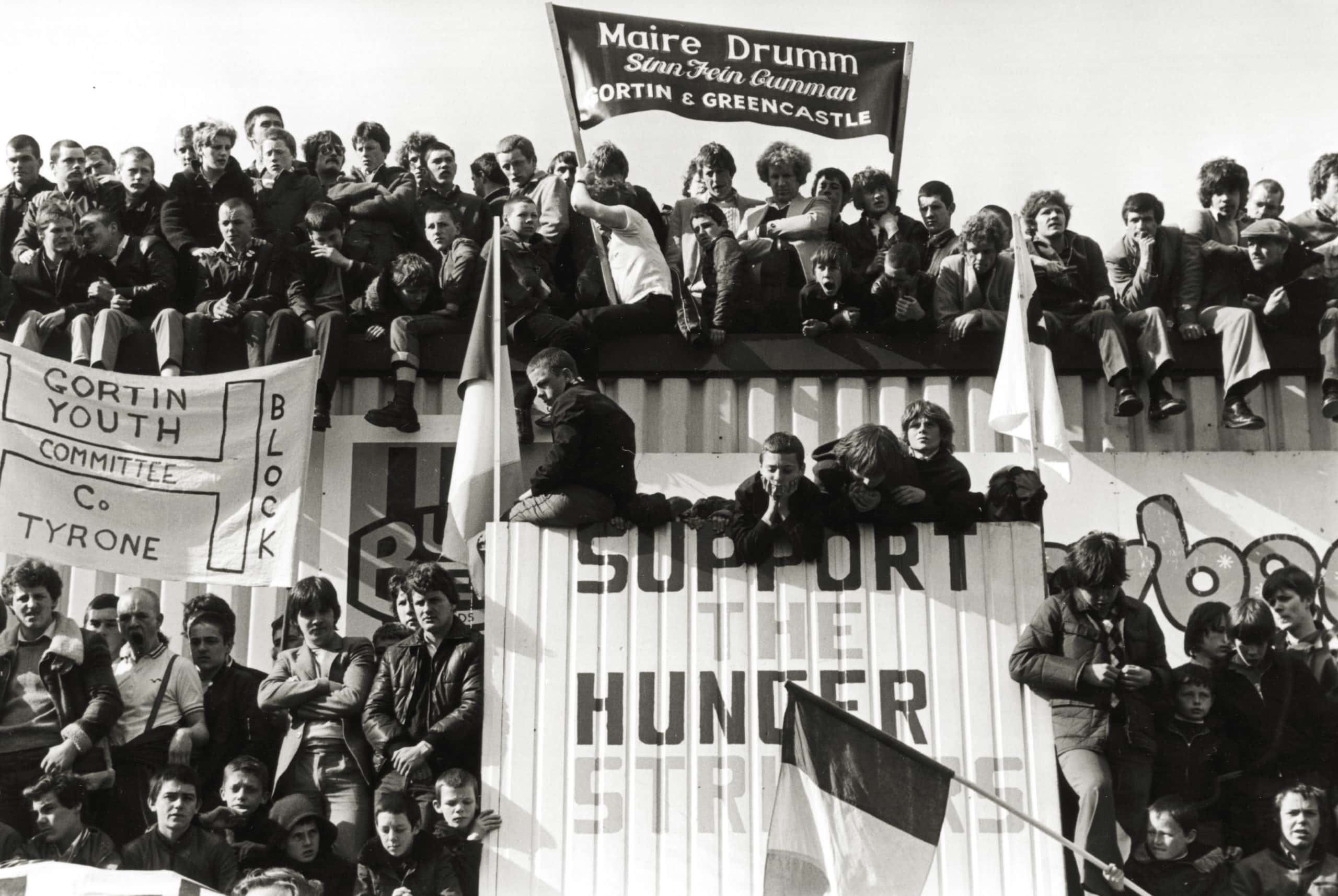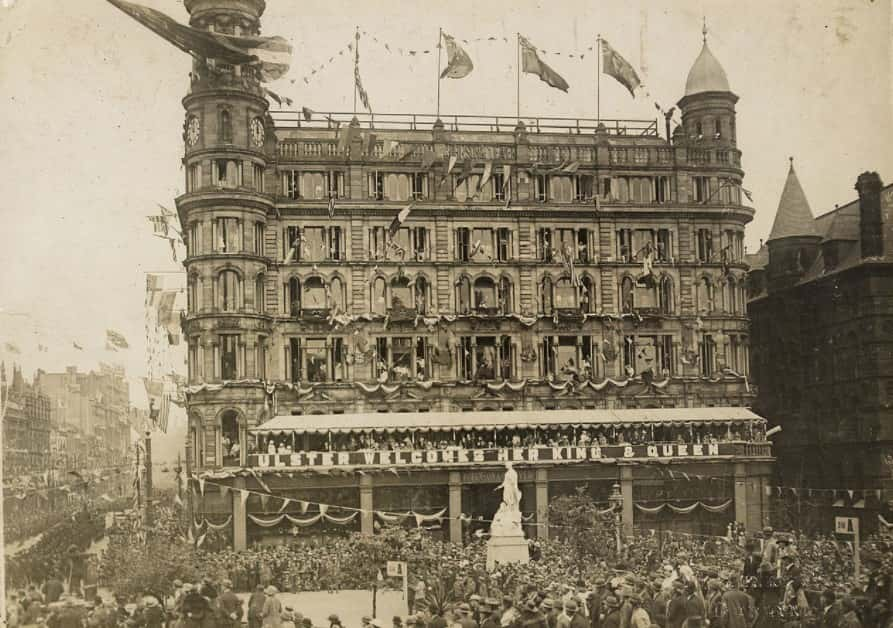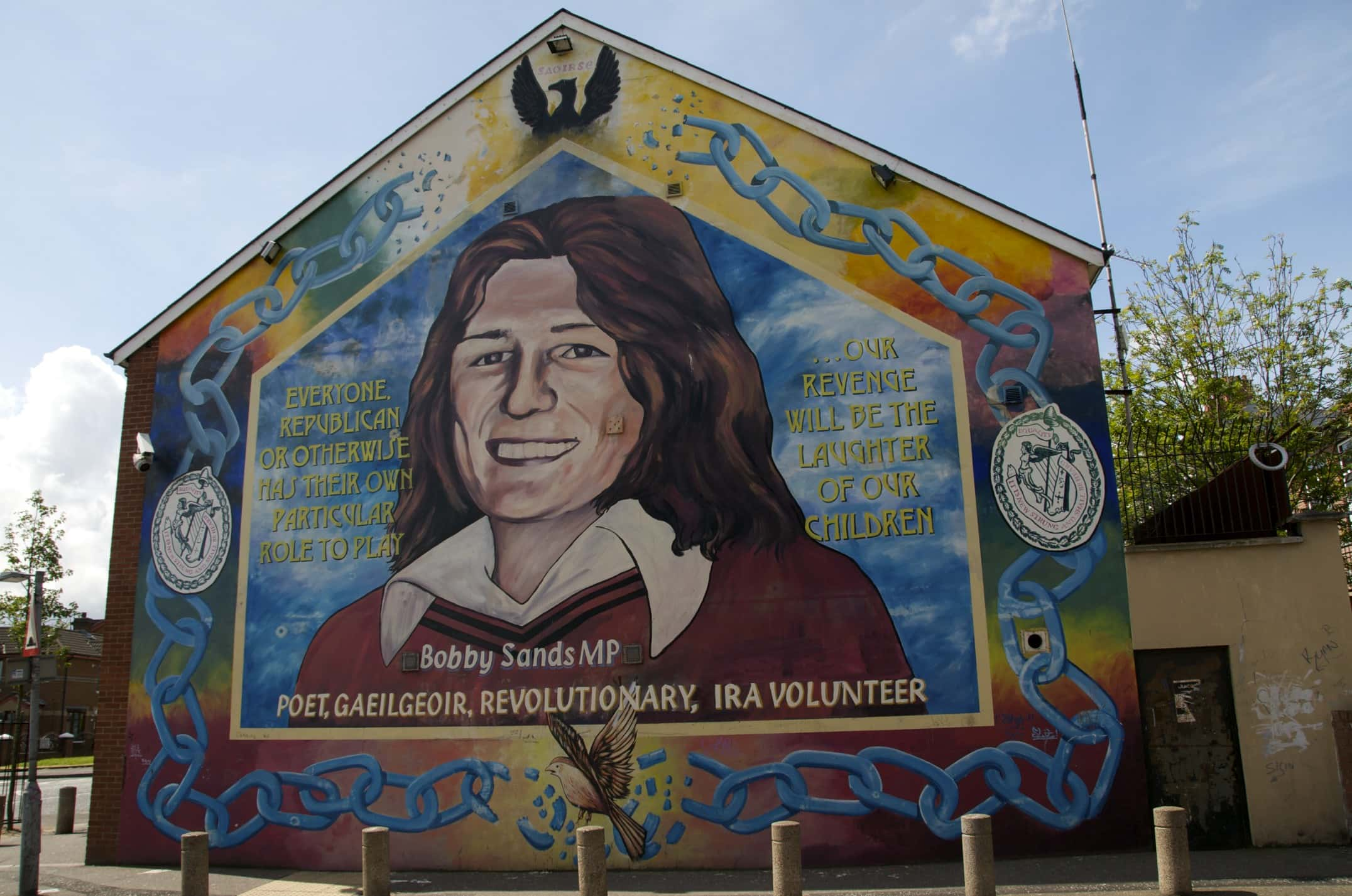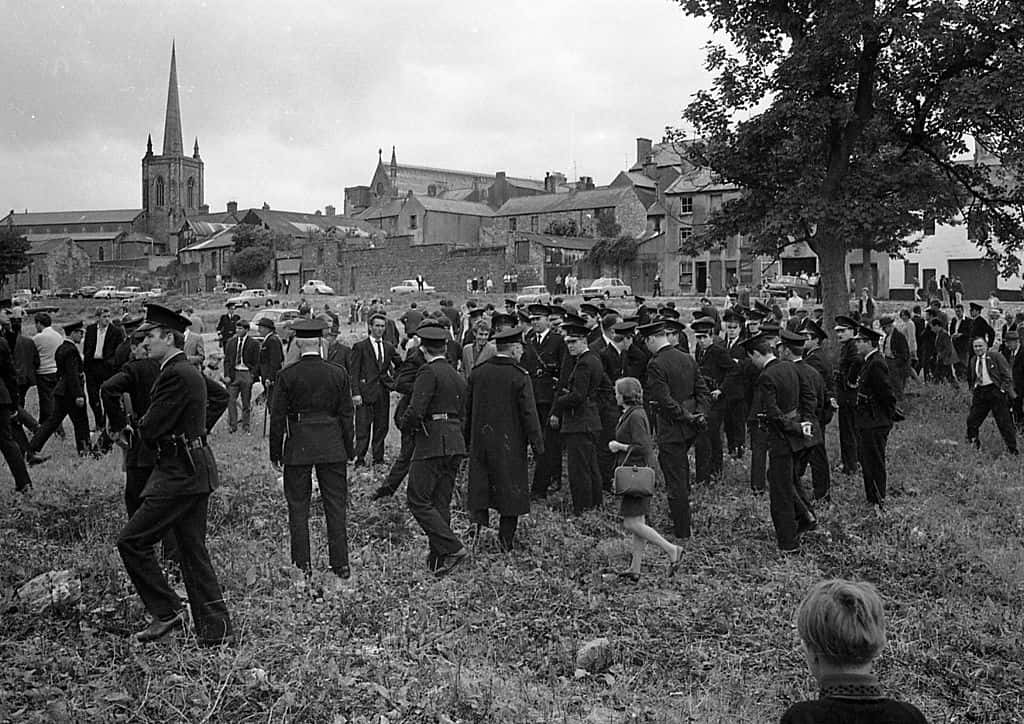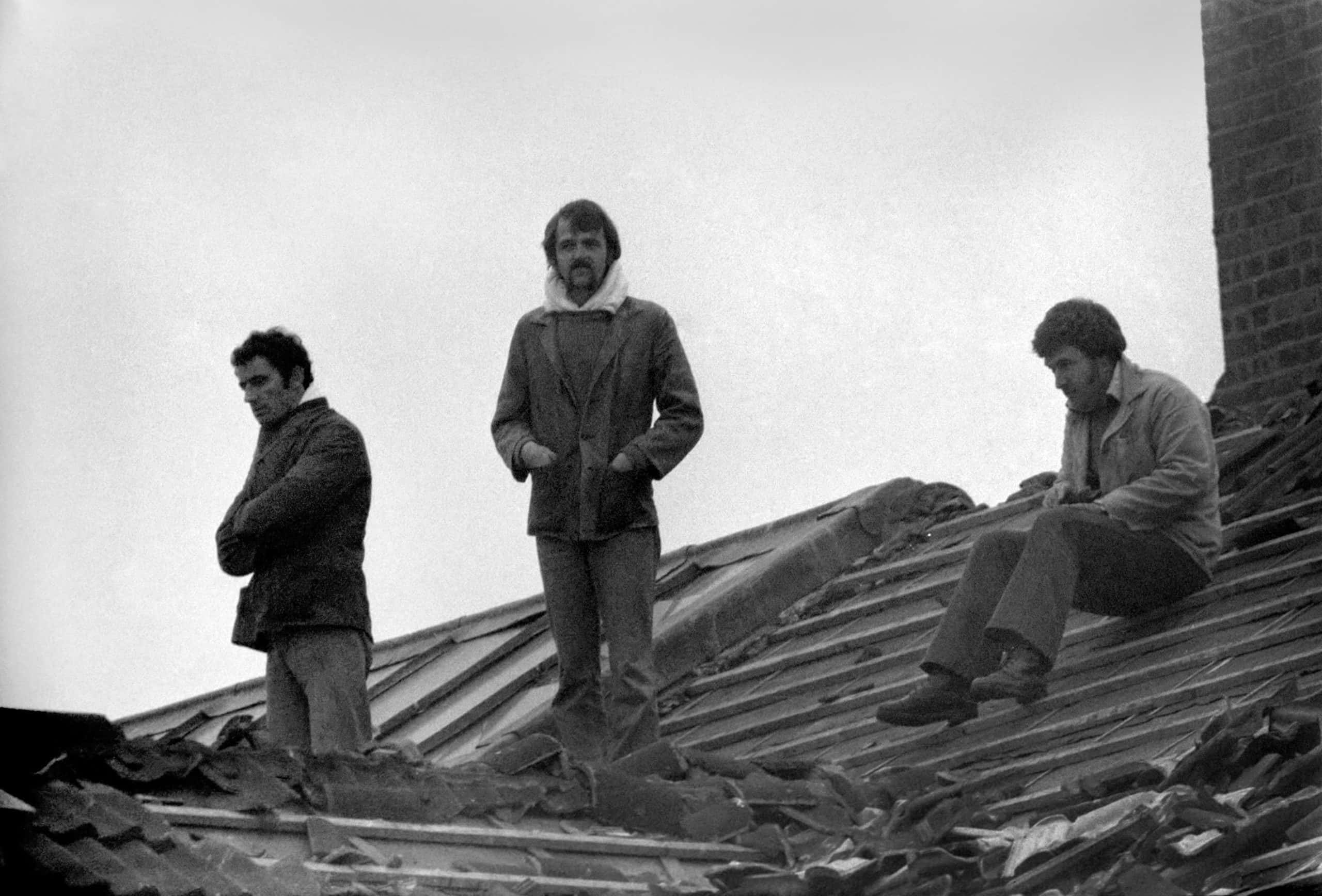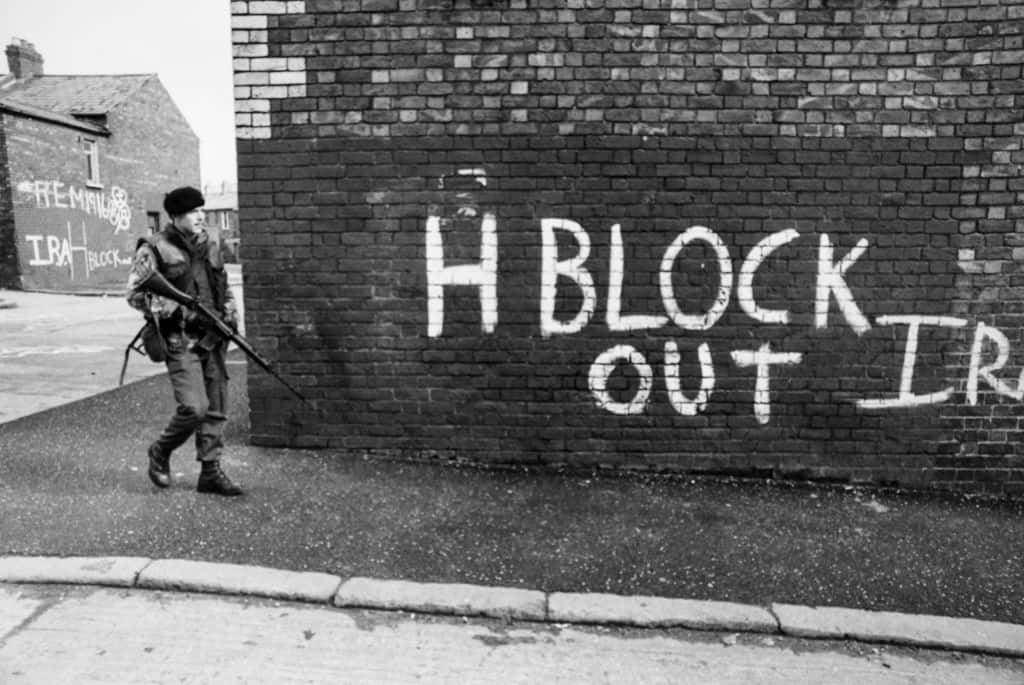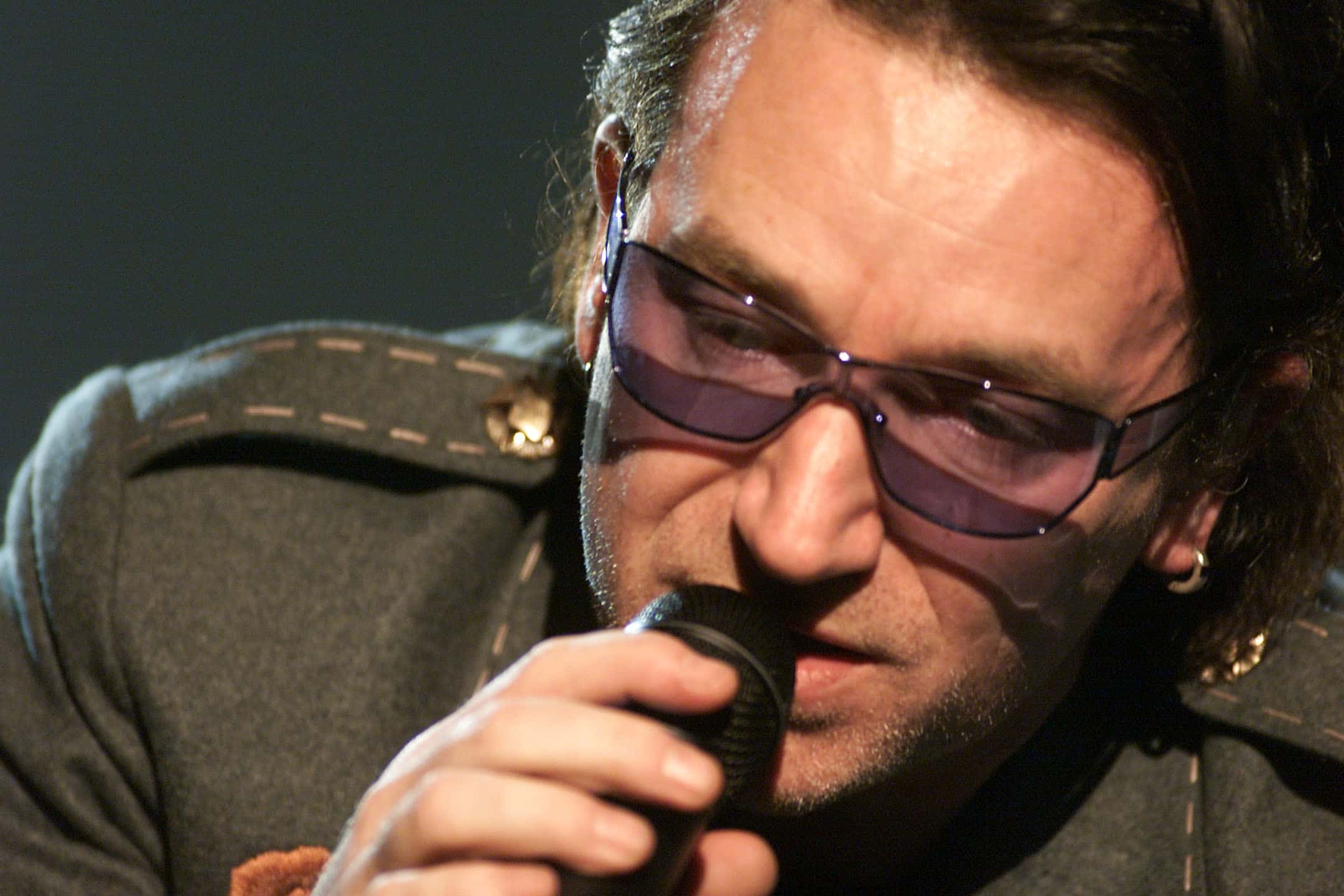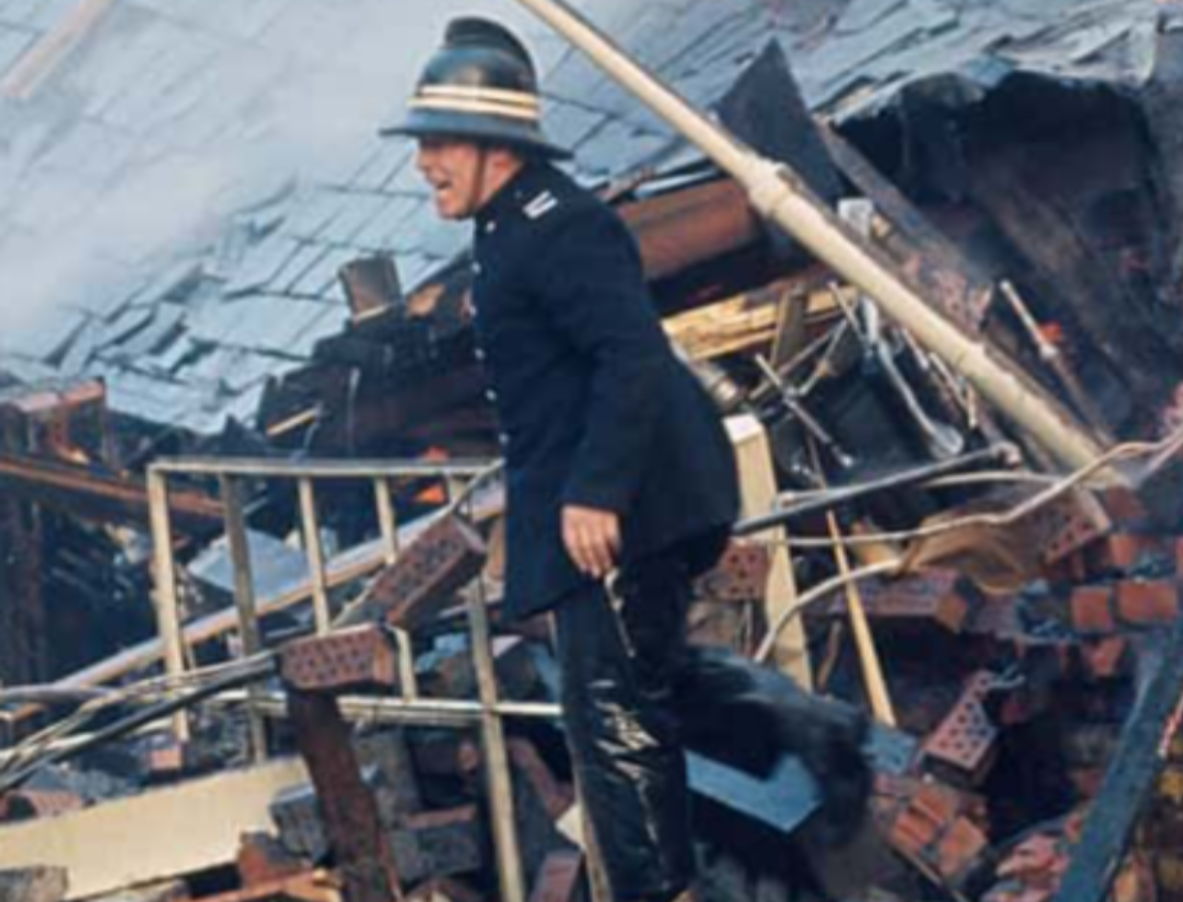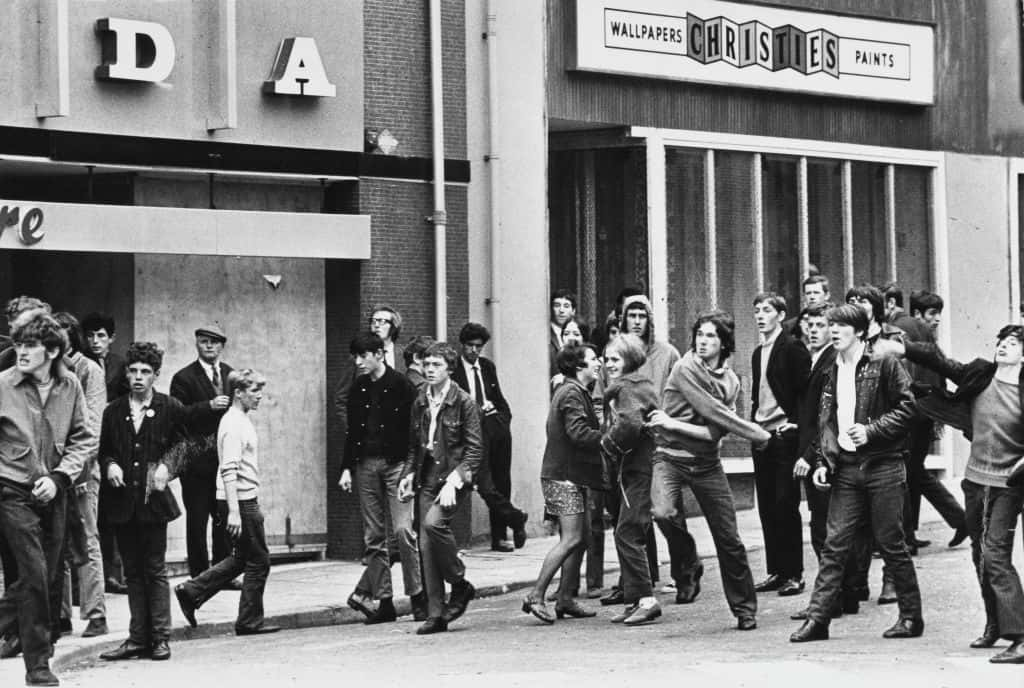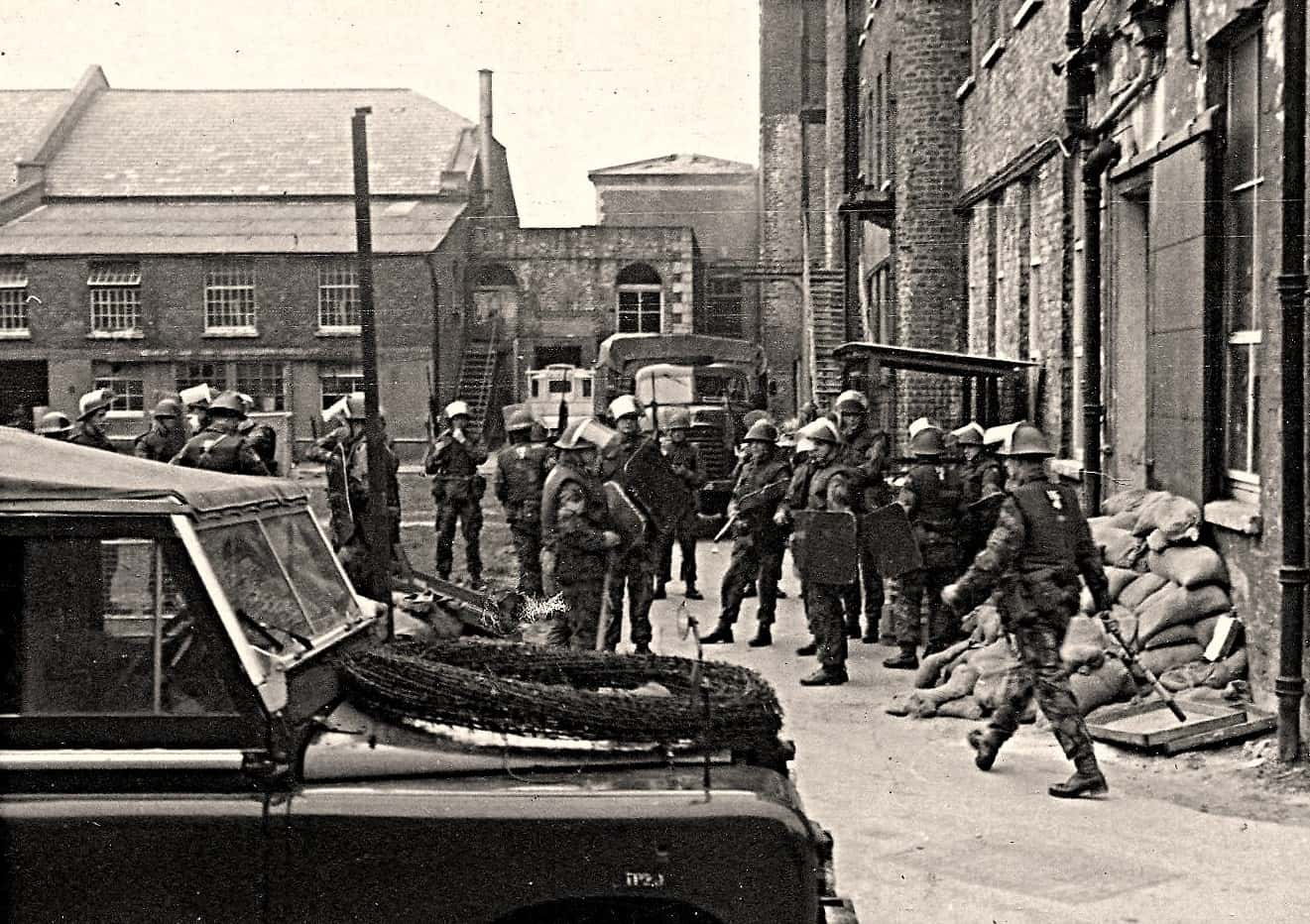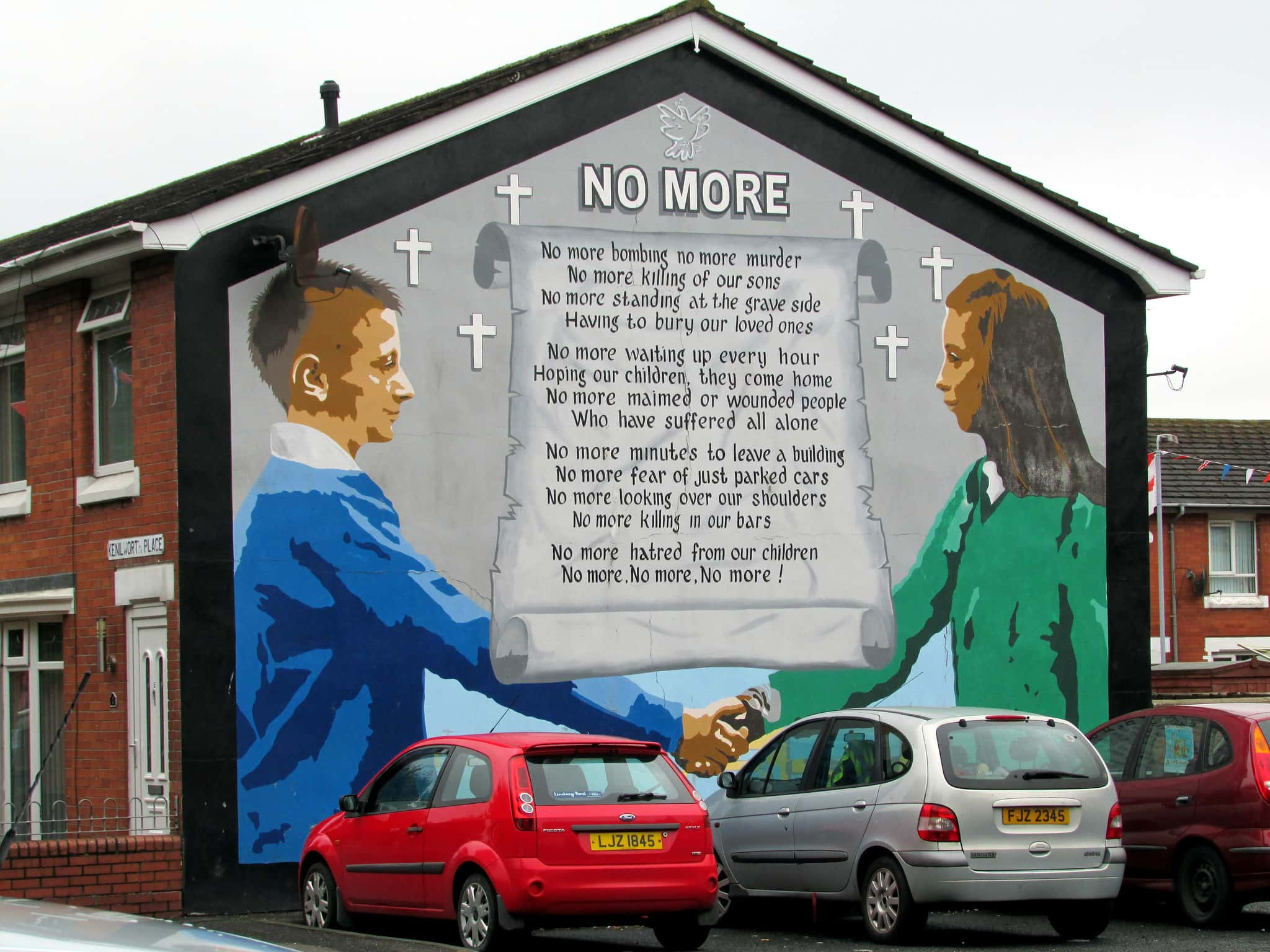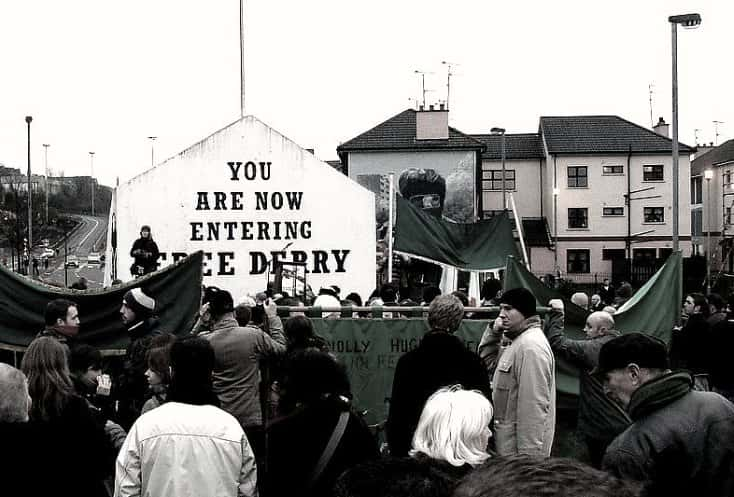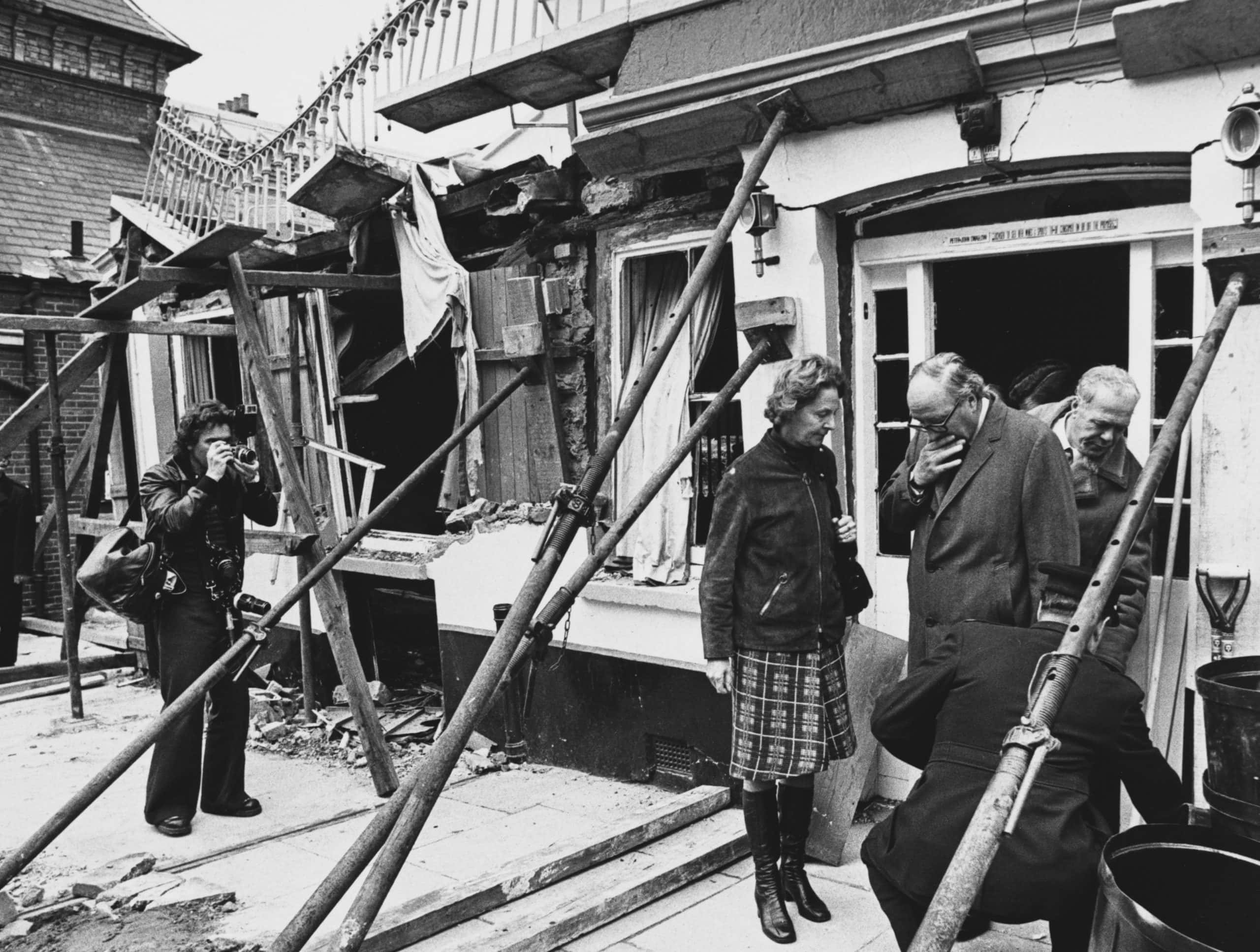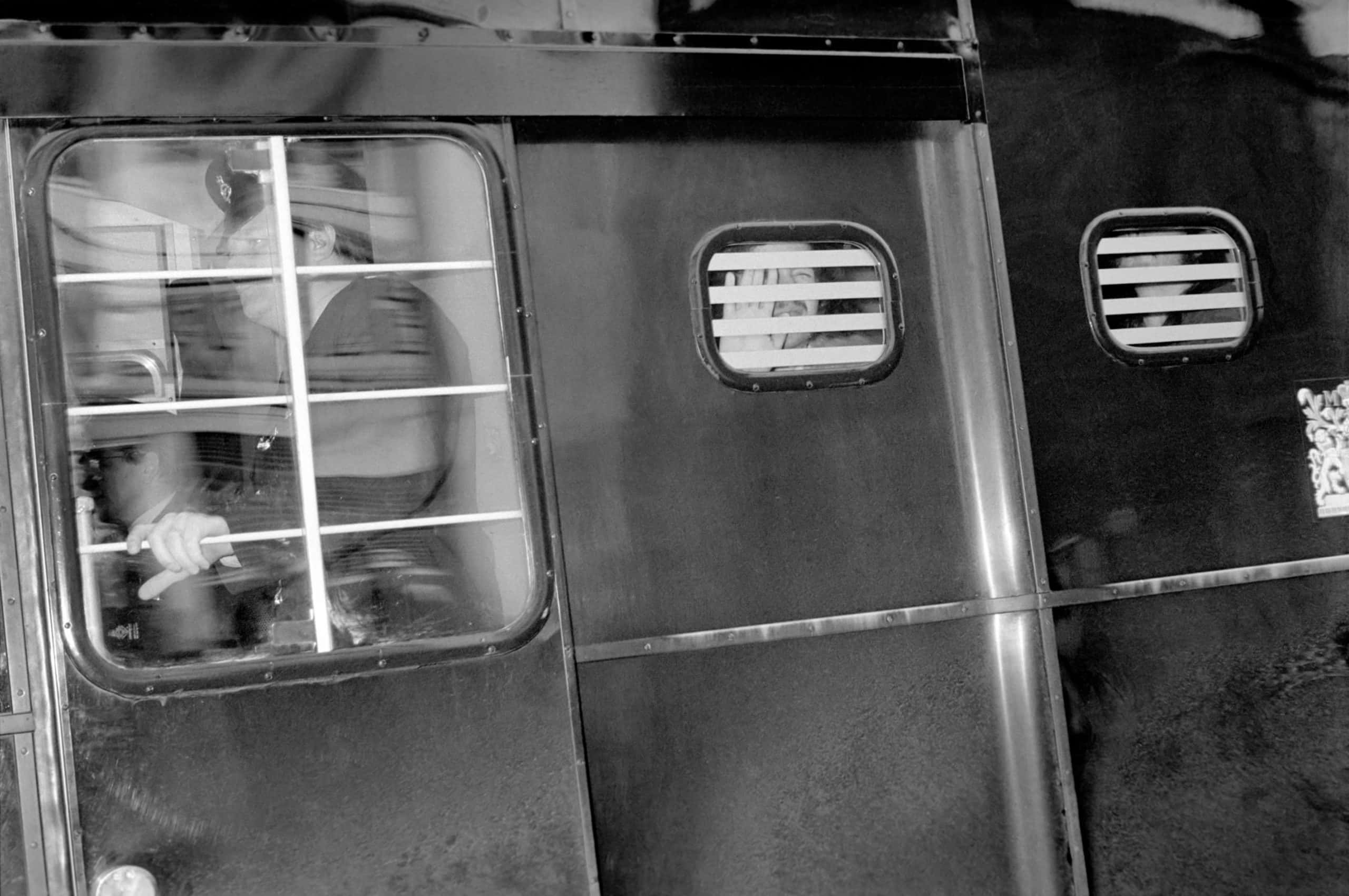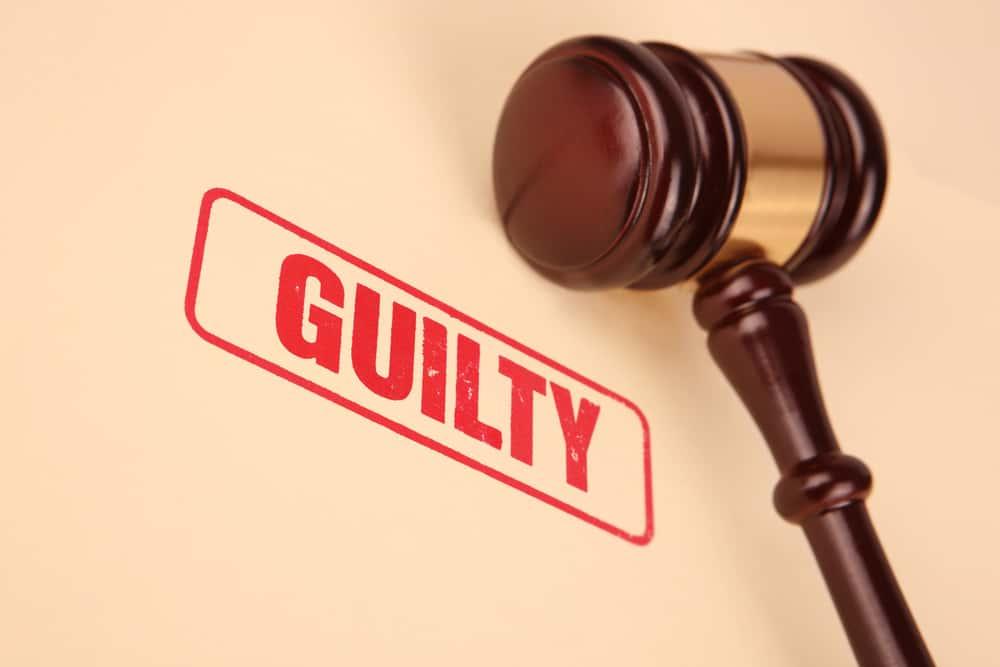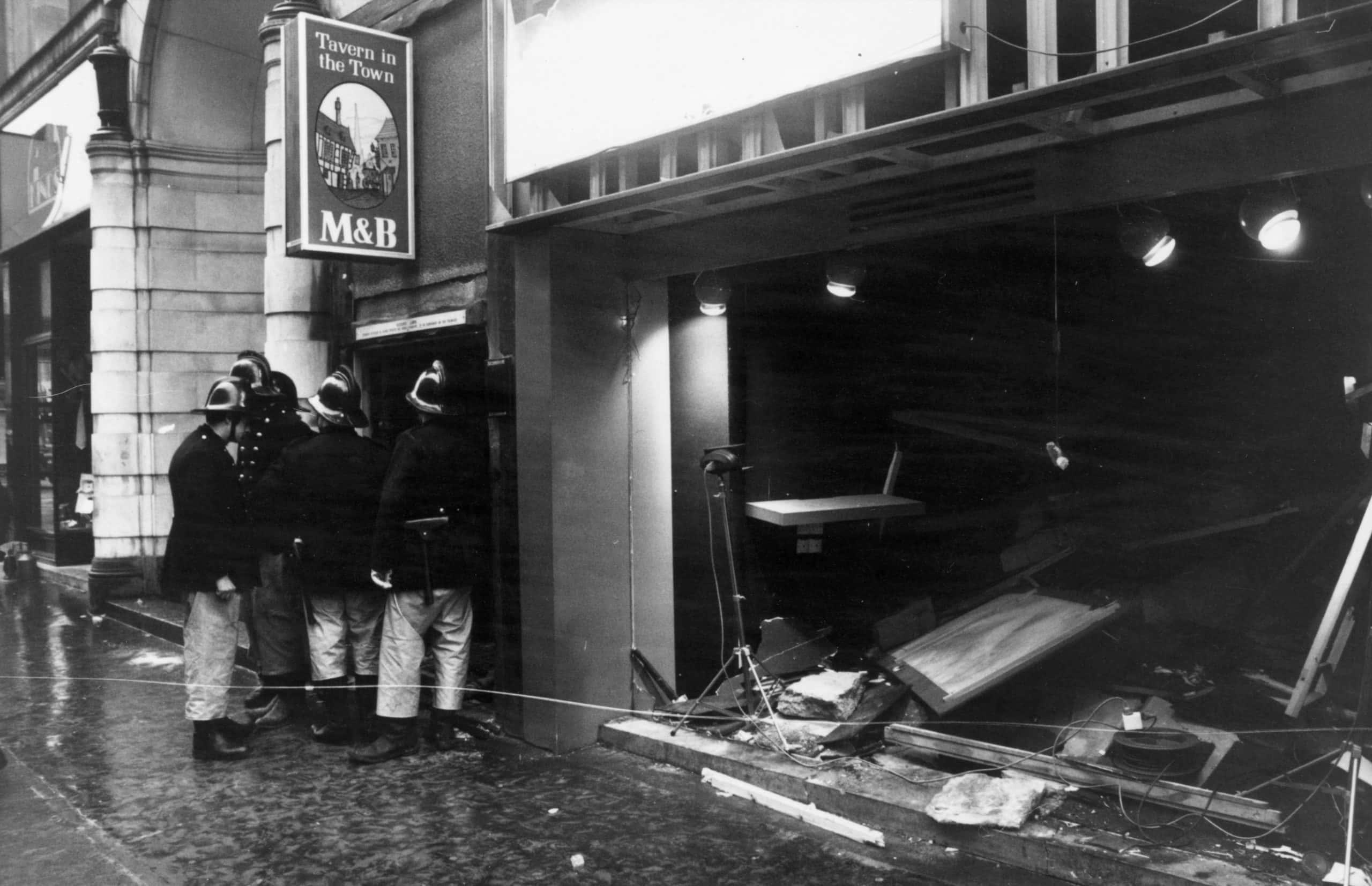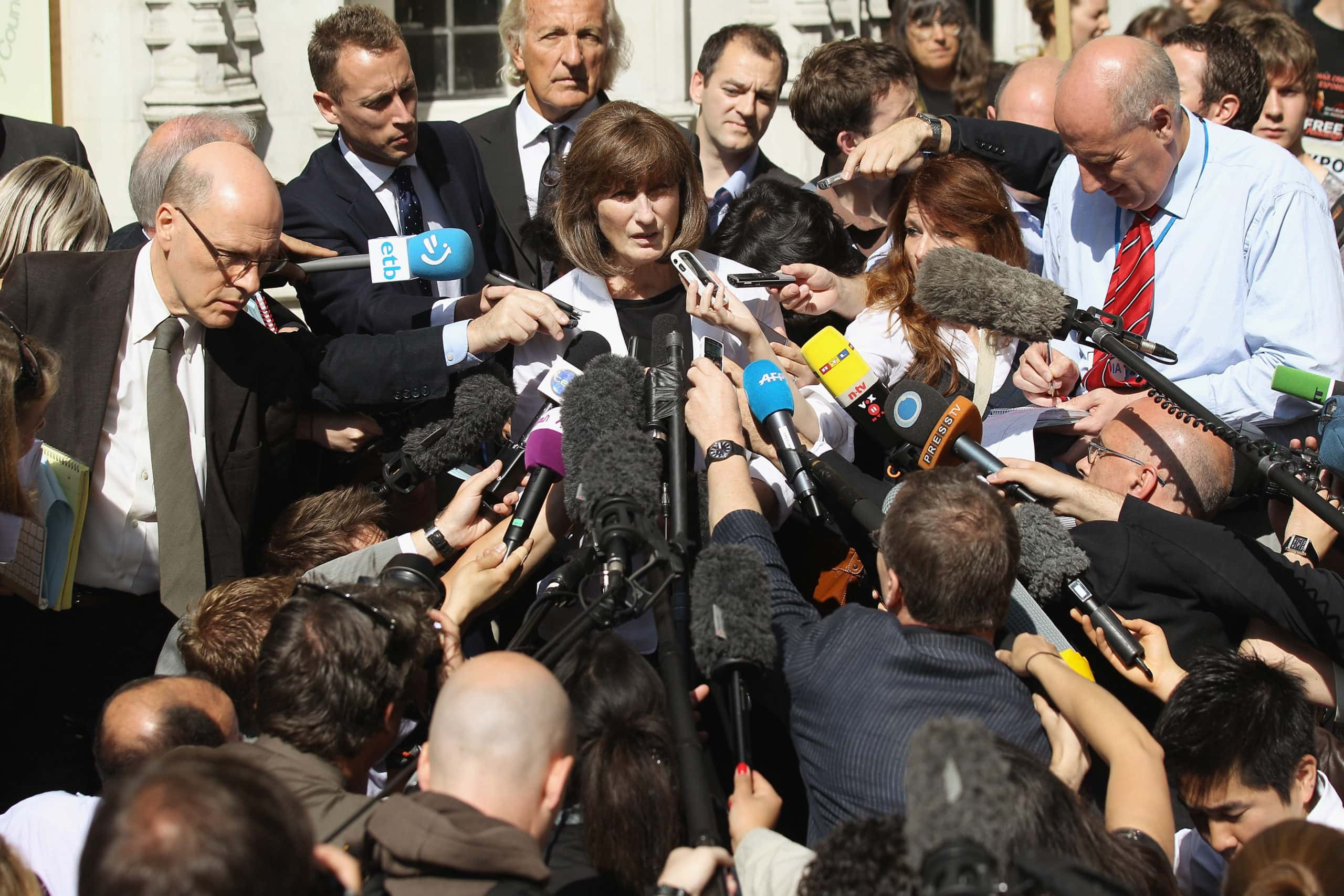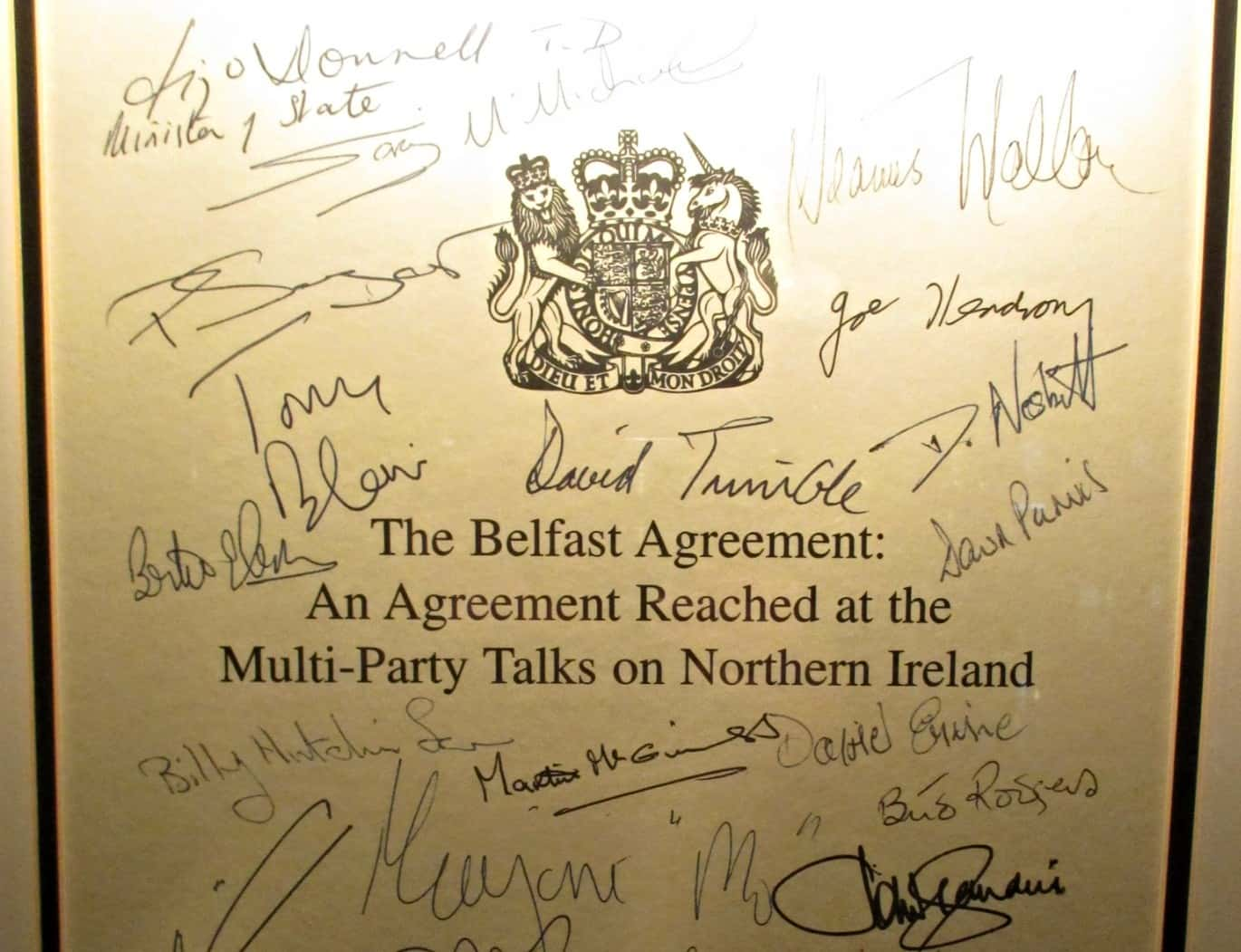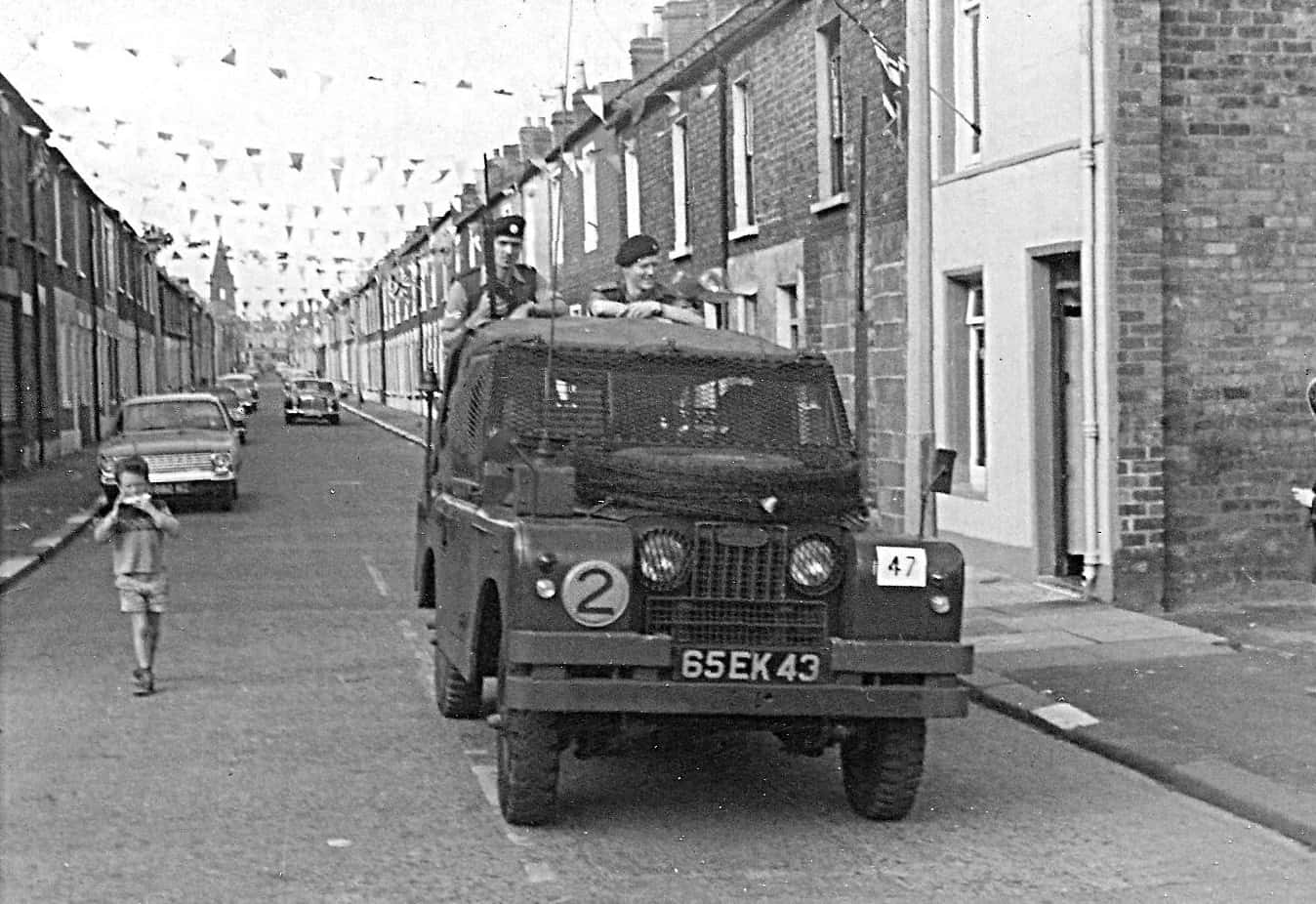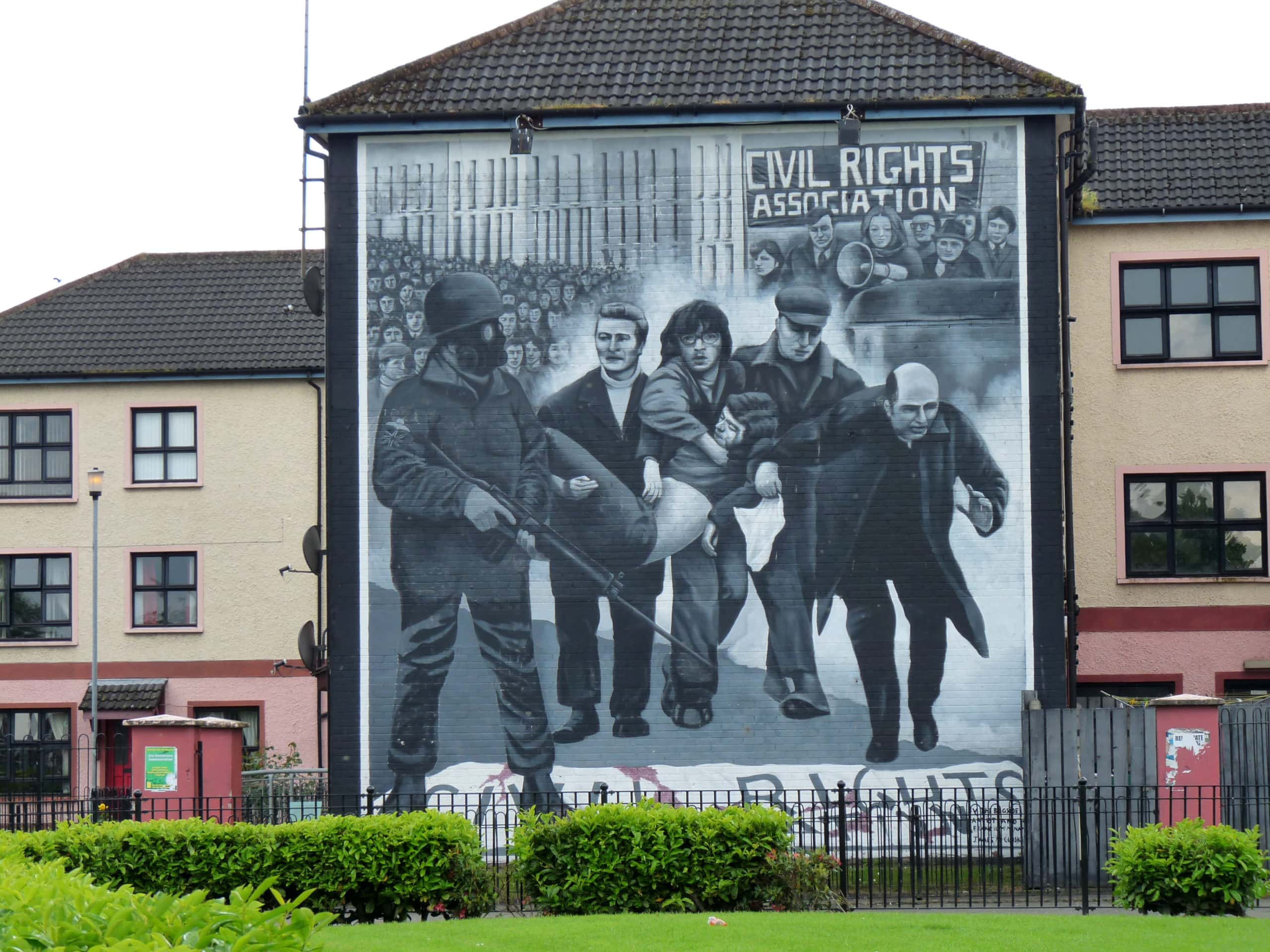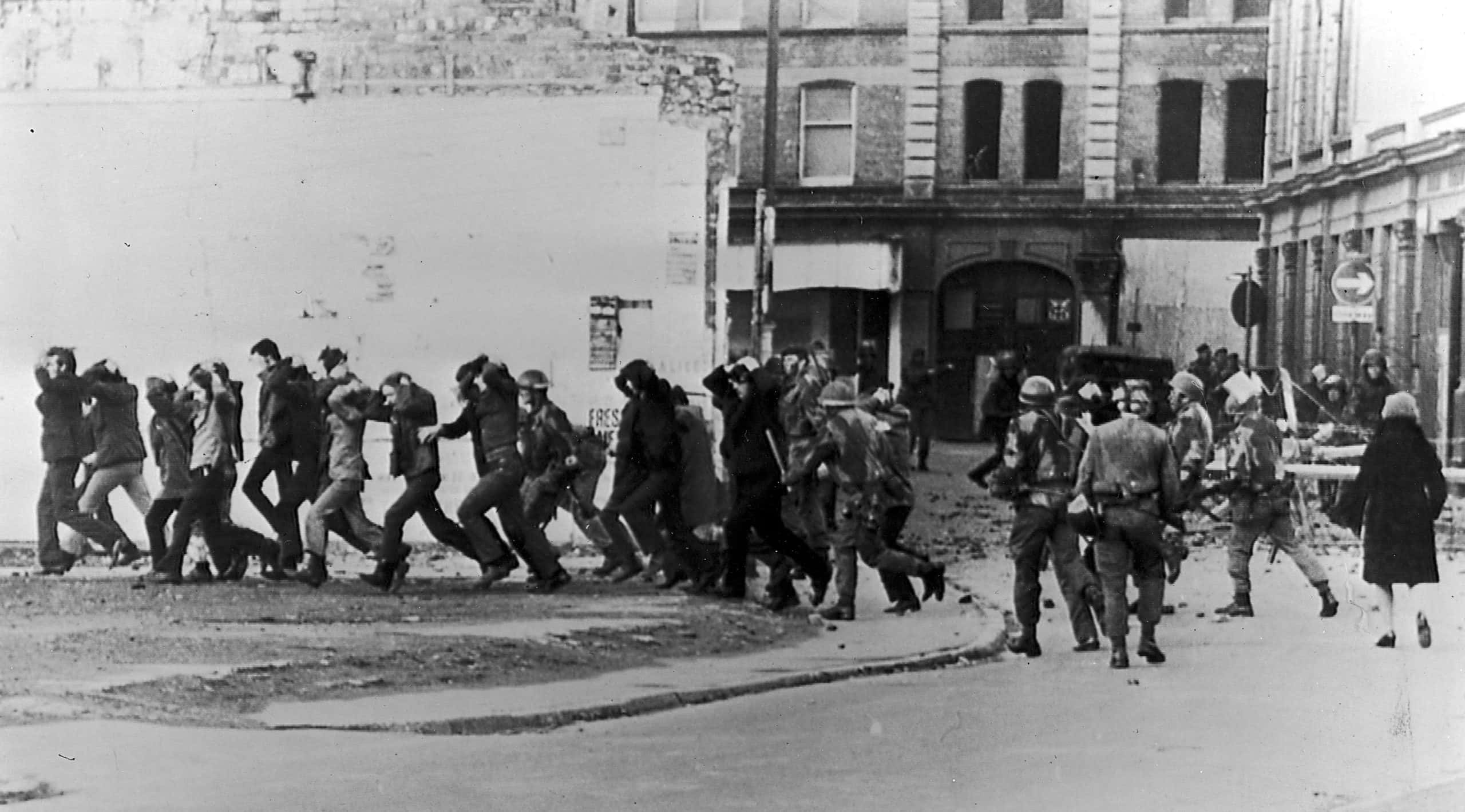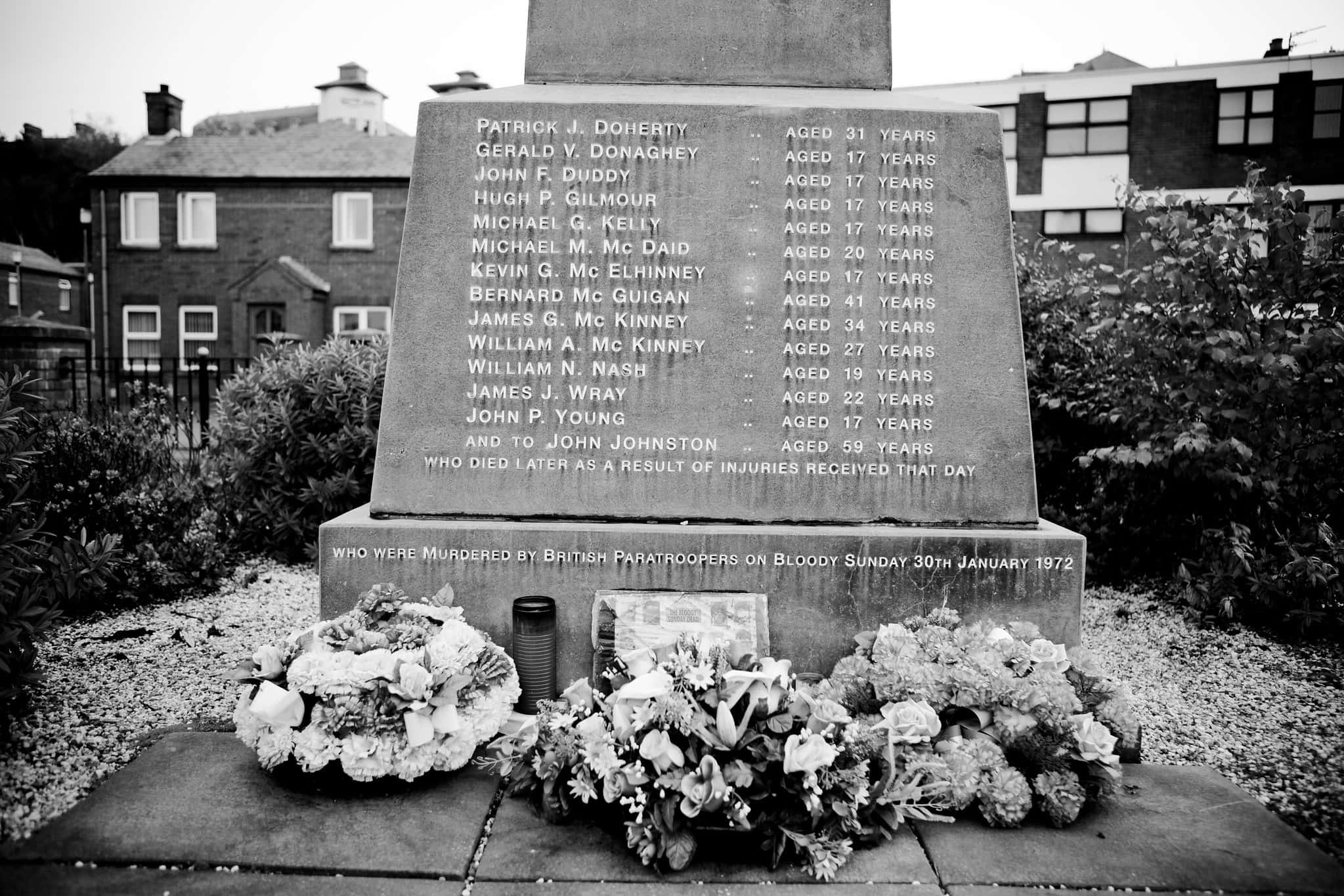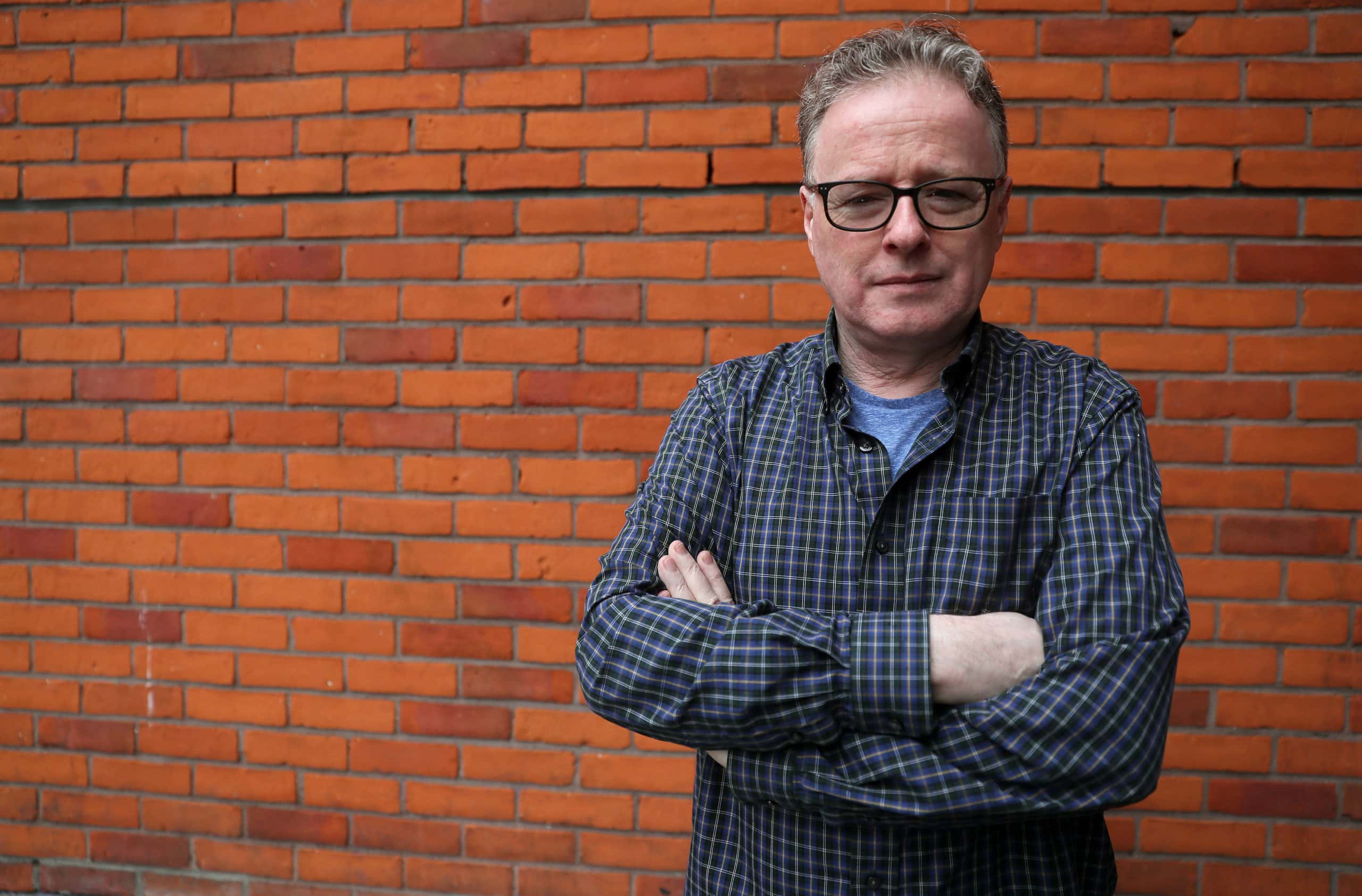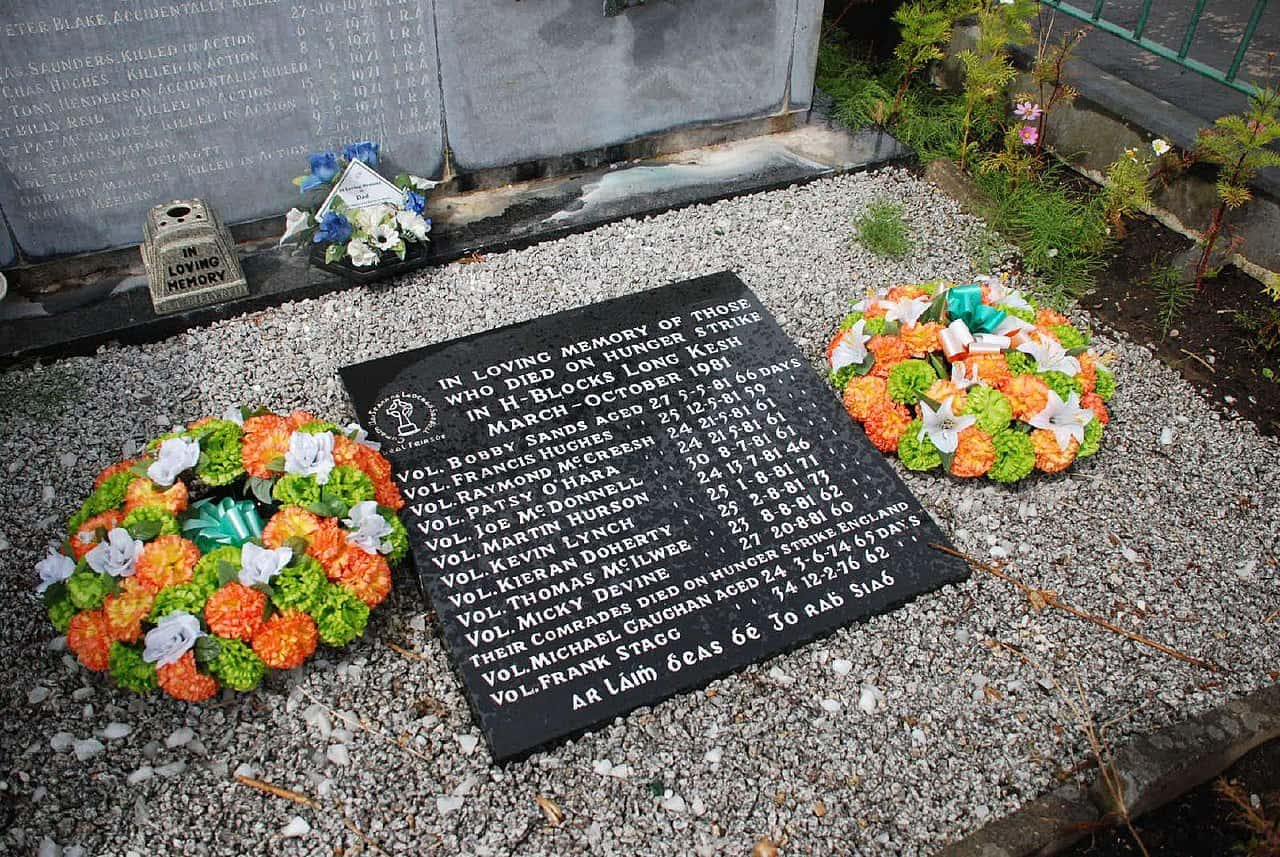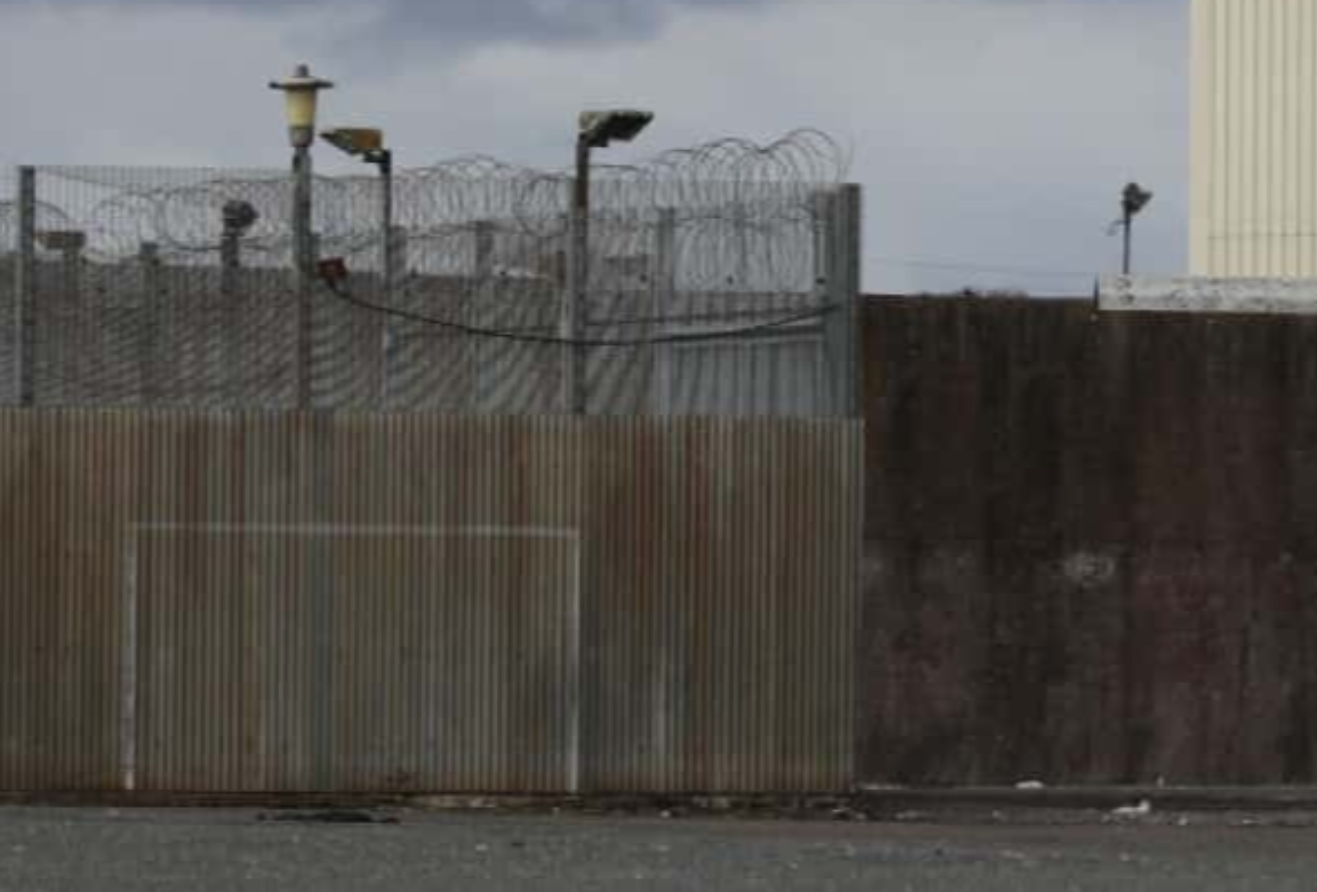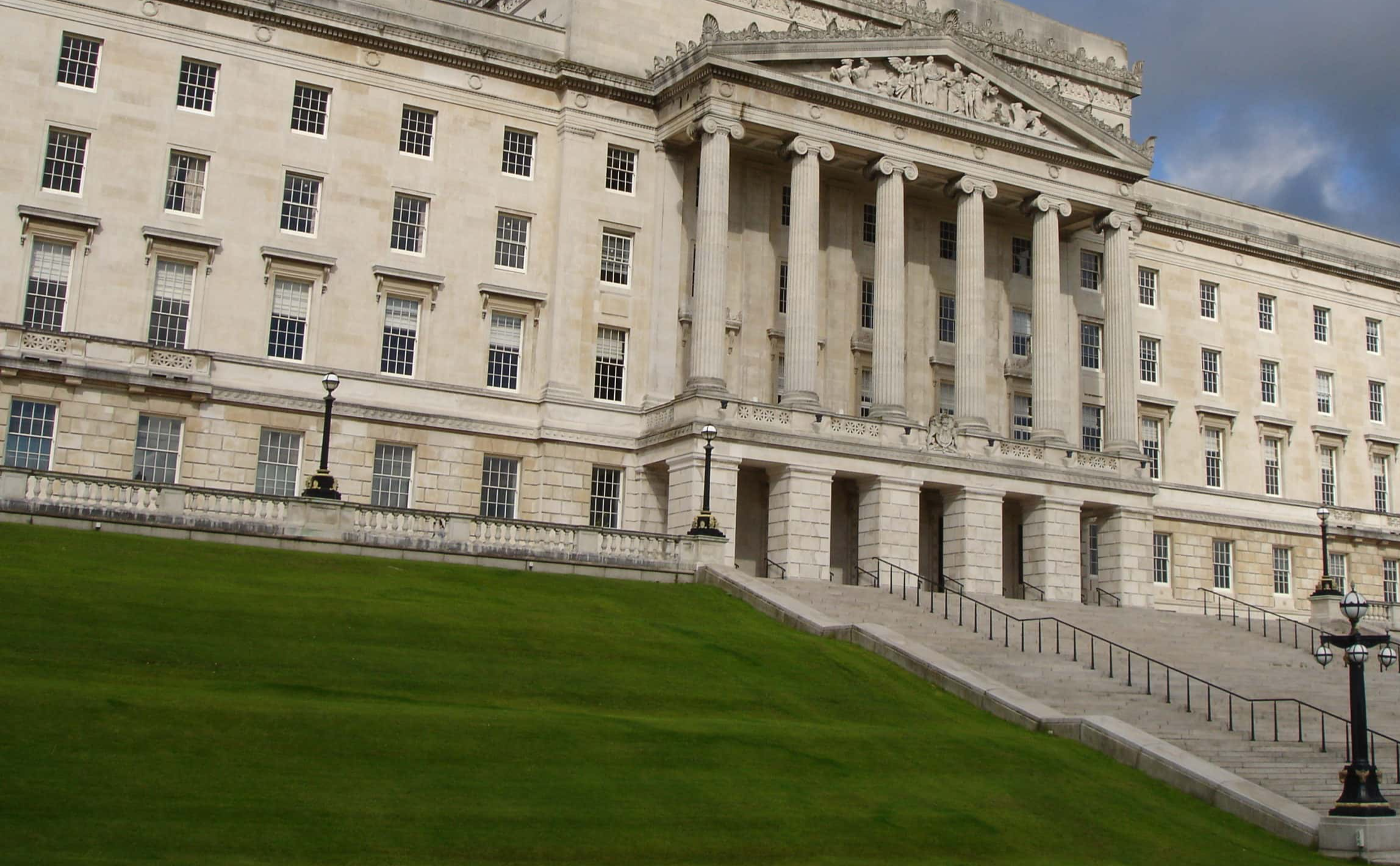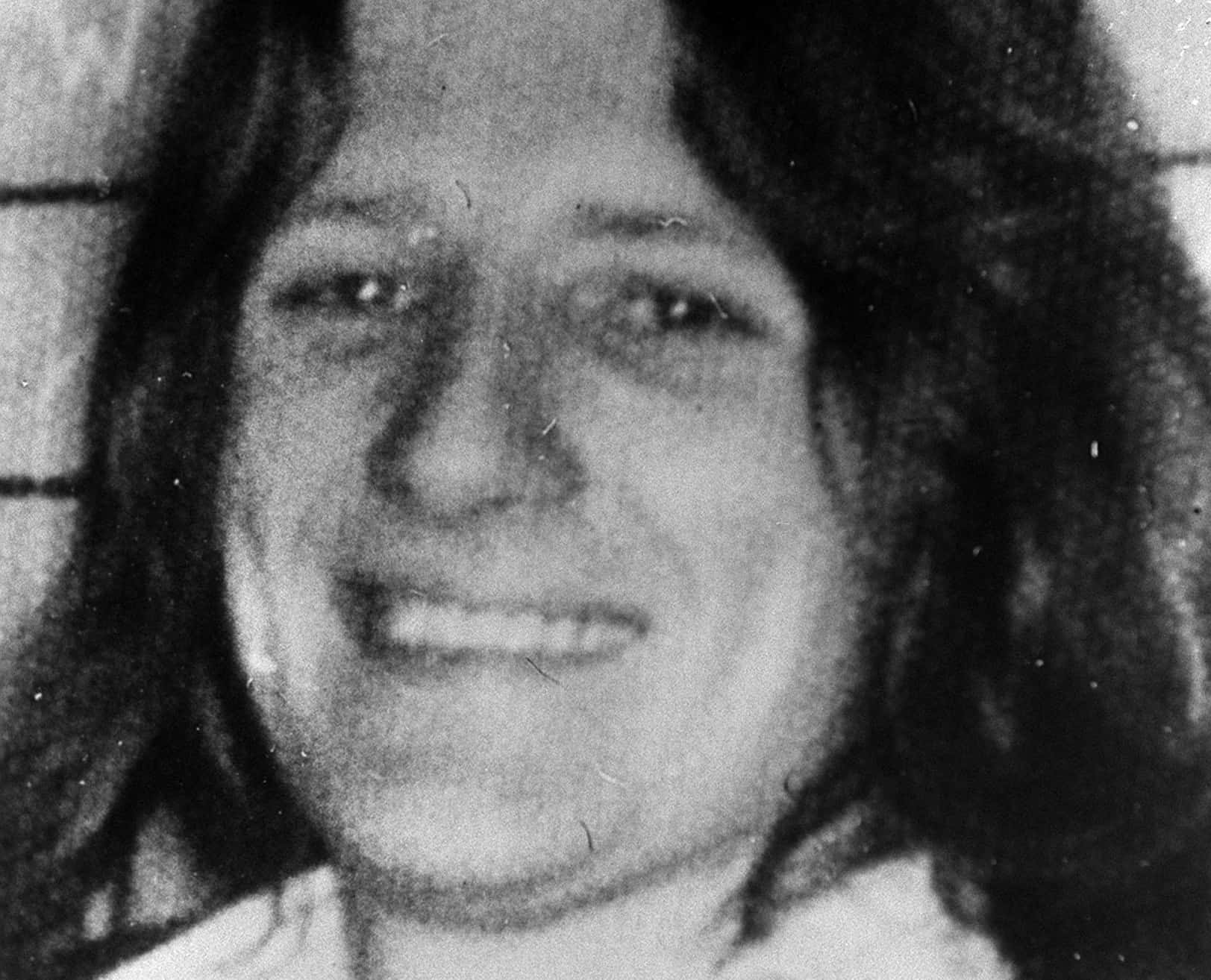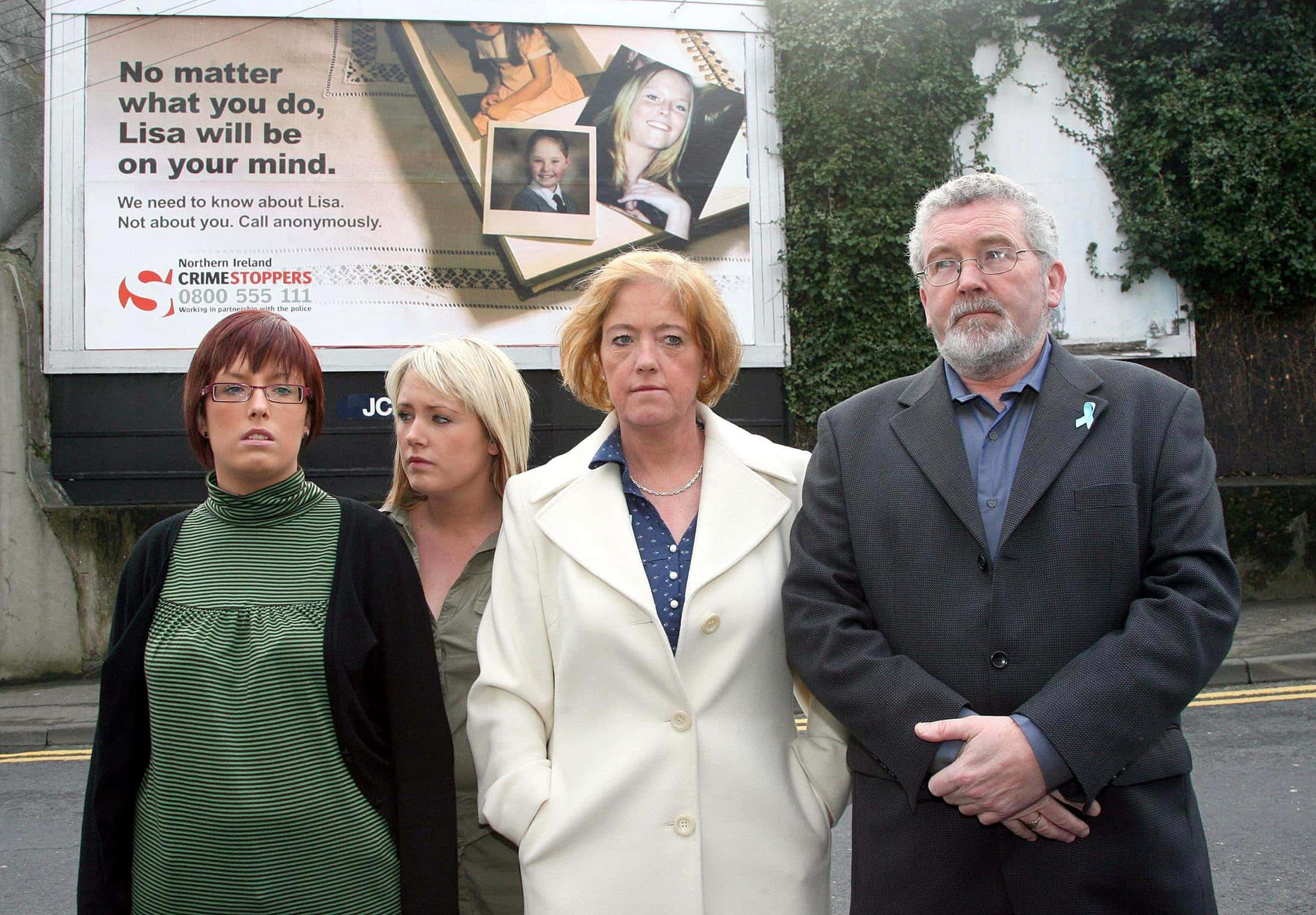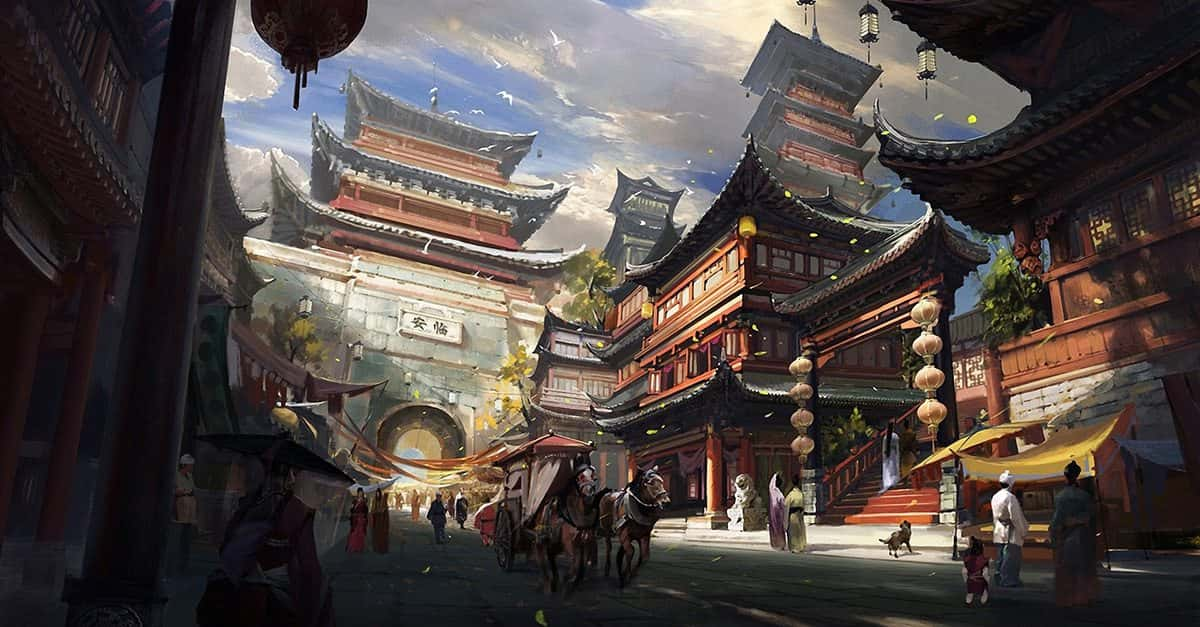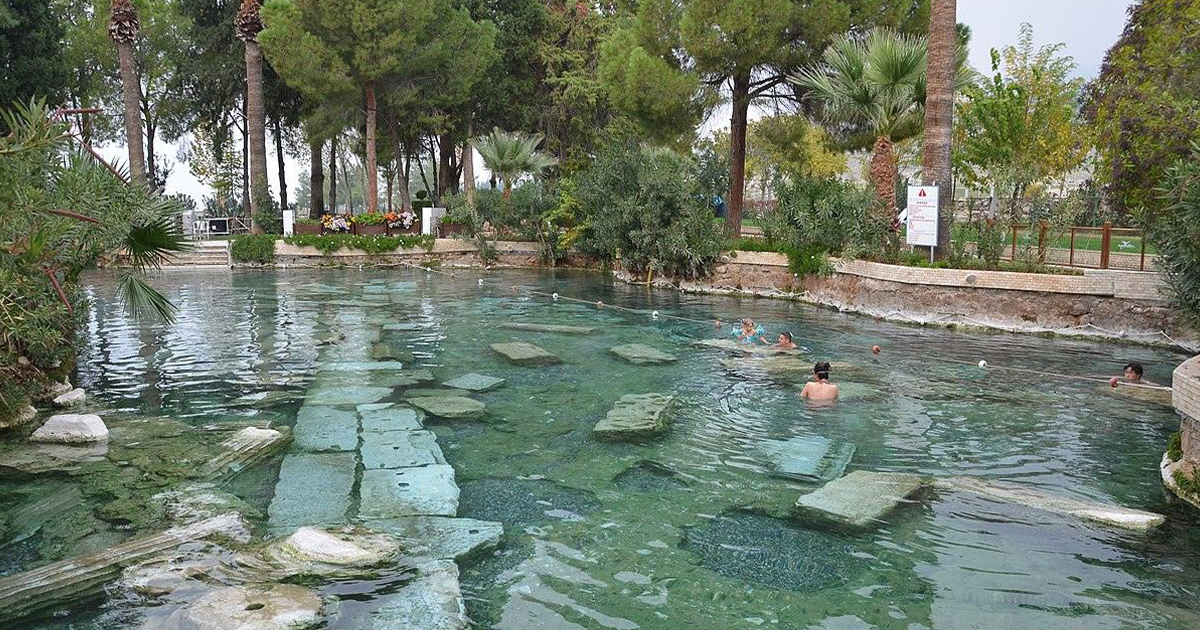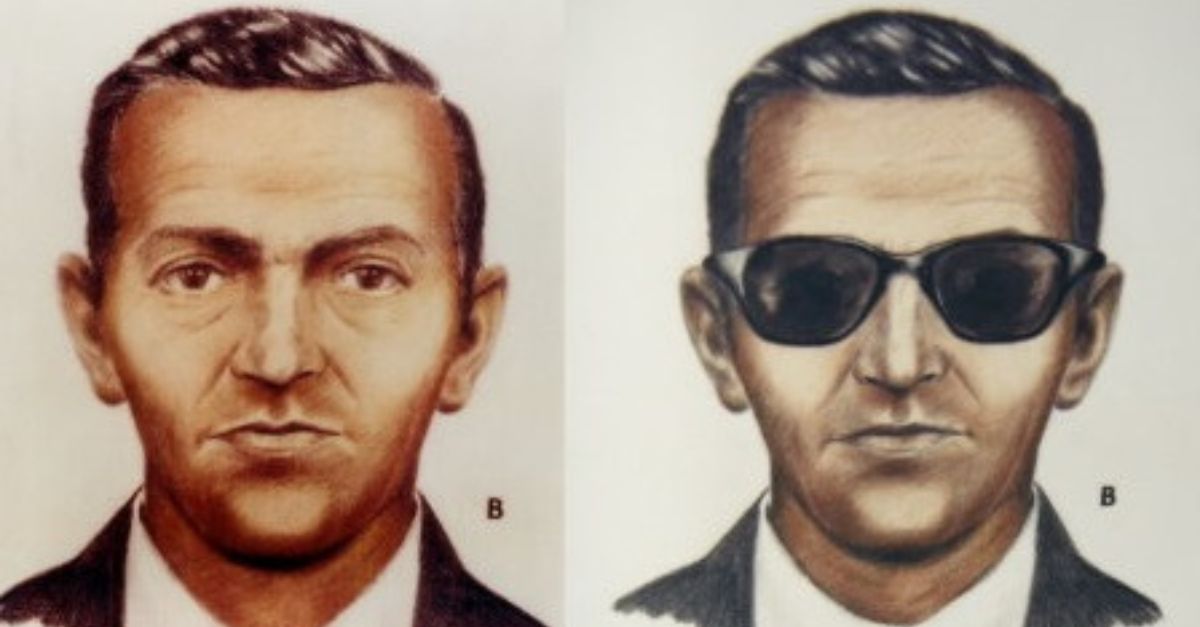"When I told the people of Northern Ireland that I was an atheist, a woman in the audience stood up and said, 'Yes, but is it the God of the Catholics or the God of the Protestants in whom you don't believe?'"—Quentin Crisp
The latter half of the 20th century was not kind to Northern Ireland. It played host to a far-reaching conflict between those determined to keep it in the UK (Unionists), and those who wanted Northern Ireland to be reunited with the Republic of Ireland (Nationalists/Republicans). Their fight tore the country apart, blighting thousands of lives. Atrocities were committed on both sides of the conflict, and amazingly it hasn’t even been that long since the Troubles are said to have ended. It can be very difficult to look at this troublesome period objectively, and even more difficult to summarize everything that happened, but for our part, here are 45 facts about this all too recent conflict.
45. To the Ballot Box
One political party which gained great prominence during the Troubles was Sinn Féin, which is today a hugely influential party in both Northern Ireland and the Republic of Ireland. They underwent a lot of evolution during the Troubles, including a schism which split the party into two groups. While Sinn Féin was often associated with the Provisional Irish Republican Army (the second IRA) during the Troubles, they also made an important transition away from radicalism into politics. Since then, they have continued as a left-wing party with a major presence in Northern Irish politics.
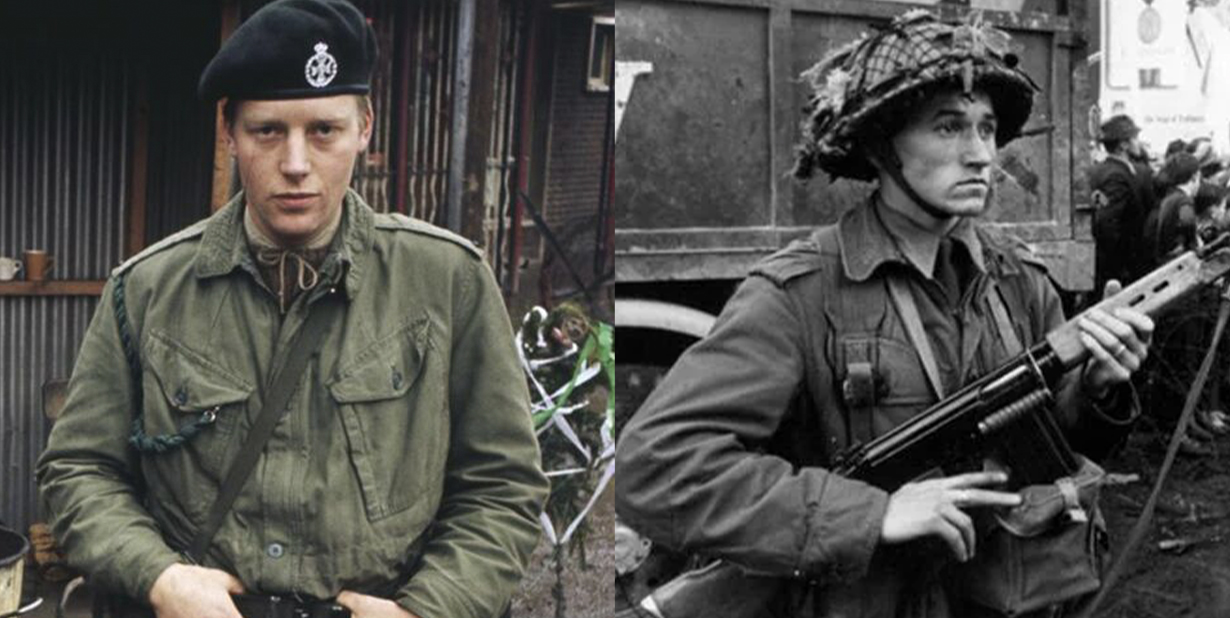
44. Once Upon a Time…
In the 17th century, Scottish and English planters began settling in the Irish province of Ulster (this was later called the Plantation of Ulster). Because they were outsiders who weren’t Catholic, they clashed with the native Irish, who saw them as invading outsiders (the history of outsiders invading Ireland is a long one). Conflicts arose across the centuries following the Plantation, often resulting in Irish defeats. Persecution of Catholics was also rampant in this time period, even after the Catholic emancipation of 1829. This historical mistreatment of Catholics would be a major factor leading to the Troubles.
43. An Agreement Which Nobody Agrees On
From 1912-1922, a new insurgency began throughout Ireland as the Irish Republican Army (IRA) launched new attacks against the occupying British forces. To make a long and very complicated story short, the conflict led to Government of Ireland Act in 1920. The island of Ireland was partitioned into two different countries: The Republic of Ireland (with a chiefly Irish Catholic population), and Northern Ireland (with a population that was very divided between protestants who were largely loyal to the UK and Catholic Irish nationalists who wanted a united, independent Ireland). Ireland became independent while Northern Ireland stayed in the UK, albeit with its own government. Safe to say that this partition opened up a whole new can of worms amongst those who thought it was a good deal and those who kept on fighting anyway. In Northern Ireland, within 50 years this would eventually culminate in the Troubles.
42. It Wasn’t All Black or White, Fellas…
While there was a clear divide between nationalists and unionists, some groups drifted somewhere in the middle. The Northern Ireland Civil Rights Association (known as NICRA) started a civil rights campaign to achieve goals of equality in the country. While they were accused of being a front for the nationalists to unite Northern Ireland and the Republic of Ireland (some nationalists had helped found the movement), NICRA’s methods were ultimately non-violent, and their goals focused simply on improving civil rights within Northern Ireland for Catholics.
41. There’s Trouble Brewing!
In 1916, the Easter Uprising occurred in Dublin, when all of Ireland was still part of the United Kingdom. The uprising, which saw the occupation of public buildings, was brutally put down by British forces, who also executed most of the detained ringleaders, one of whom was gravely injured, by firing squad. The uprising was heavily romanticized or vilified (depending on who was doing the talking), and in 1966, Northern Ireland bore witness to multiple parades in honor of the Uprising’s 50th anniversary. While such an action already received mixed responses, the eighth of March also witnessed a pillar in Dublin dedicated to English hero Horatio Nelson being dynamited by a group of Irish republicans. This action spurred on unionist suspicions in Northern Ireland that the IRA were building support and planning actions against the British once again.
40. Alright, Who Started It?!
The exact beginning of the Troubles is disputed by historians to this day. Several different events have been offered as the tipping point, including the October 1968 civil rights march in the city of Derry, or the August 1969 riots in that same city. I suppose ultimately, the true beginning is in the eye of the beholder.
39. How Long?
The Troubles spanned three decades, starting around 1969 and concluding in 1998, and that’s before even mentioning the background that led to the conflict, which spans centuries of disagreement between the various peoples of the British Isles.
38. Explosive Conflict
Over the course of the Troubles, from 1969 to 1998, it’s been estimated that at least 10,000 explosions occurred in Ireland and the UK!
37. Ready When You Are!
While a Northern Irish civil rights movement was developing in the mid-1960s (which seems to have been the perfect time for such movements, all things considered), a backlash movement among Unionists was building just as quickly. It was along this division that the battle lines of the Troubles would eventually be drawn.
36. “We Came Up with Ten, but Figured Five was Reasonable…”
In the late 1970s, IRA members who were imprisoned came up with a number of demands that they wished to be met regarding their treatment in lock up. These Five Points, as they were called, consisted of the following: the right to not wear slammer uniforms, the right not to do slammer work, the right of free association with other prisoners, the right to one visit, one parcel, and one letter per week, and the full restoration of remission lost through the protest".
35. In the Name of the Father…
Contrary to some beliefs, the Troubles was not a truly religious conflict. While it’s true that the unionists were mostly Protestant and the nationalists were mostly Catholic, the battle lines weren’t exclusively drawn along religious lines. The majority of Irish Catholics never joined the IRA, and some never campaigned to have Northern Ireland liberated. That, of course, didn’t stop people from assuming, based on Ireland's history, that it was a battle of Catholics vs. Protestants, full stop.
34. Now it’s Serious
While many hunger strikes and demonstrations were carried out at different points in the history of the Troubles, one of the most prominent ones was the 1981 Hunger Strike, carried out by IRA prisoners seeking to gain Special Category Status as prisoners in what they saw as a battle rather than isolated incidents of terrorism. After five years of useless protests, dirty protests, and smaller-scale hunger strikes, the 1981 Strike was the final act which gained the most attention. Led by Bobby Sands, the influential Strike lasted seven months, during which time the British government refused to bend from their determination to pacify and subdue Northern Ireland. As a result, the IRA ramped up their campaign of aggression and Sinn Féin moved into mainstream politics.
33. It Wasn’t a Very Good Year
In an example of how violent and radicalized those involved in the Troubles had become during the 1981 Hunger Strike, security forces were determined to have fired nearly 30,000 plastic bullets and ended seven people during 1981 alone. By contrast, they fired around 16,000 plastic bullets and ended four people in the eight years following the strike.
32. Government Authority
In the aftermath of the Irish Civil Battle in the 1910s and 1920s, the newly formed country of Northern Ireland passed Civil Authorities (Special Powers) Act in 1922. This act allowed the governing body to do virtually anything in its power to maintain law and order in the midst of the aggression between unionists and nationalists sweeping the six counties. Even after the aggression was gone, for the most part, the government maintained those broad powers, something which has rarely been known to settle the minds of the public.
31. “Many Fine Works Have Been Written in Slammer…”
While in lock up, IRA member Bobby Sands took the time to publish literary works, as well as the lyrics for three songs called “McIlhatton”, “Sad Song for Susan”, and “Back Home in Derry". All three were recorded a number of times by such artists as Christy Moore and John Close.
30. The Majority Becomes the Minority
Even during the times of relative quiet after the 1920s, the government of Northern Ireland viewed the Irish Catholic population with much suspicion and hostility, giving preferential treatment to unionists when it came to housing and employment. By the 1960s, the security force of Northern Ireland was more than 90% Protestant.
29. This isn’t Ulawful, it’s Politics!
While the British government and the unionists considered the IRA to be nothing more than criminals and terrorists, the nationalists viewed themselves as fighting a battle. When IRA prisoners were detained and imprisoned, they insisted that they were prisoners of battle or political prisoners. The British government refused to recognize this status, which led to various strikes by the IRA prisoners (more on that later).
28. Not Even a Warning?
According to many nationalists, British government forces (such as the security force in Northern Ireland) were given orders for use of deadly force when dealing with threats, particularly perceived threats from Irish nationalists. The existence of this policy has, of course, been denied by the forces accused of using them. The issue continues to be a subject of debate in Ireland to this day.
27. Based on a True Story
Even before the Troubles were officially over, pop culture had a field day portraying them in art. Dozens of books were written, fictional and biographical. Prominent films about the Troubles include Cal, Patriot Games, In the Name of the Father, Some Mother’s Son, Fifty Gone Men Walking, Hunger, and ’71. Sinead O’Connor, U2, Phil Collins, Morrissey, and Flogging Molly were among the many musicians and bands who produced music about this extremely contentious time in Ireland's history.
26. Battle Zone
While IRA attacks and reprisals occurred in England, Gibraltar, and the Republic of Ireland, most of the casualties of the Troubles were located in Northern Ireland. A large percentage of those people (around 1,500 of them) were ended in the capital city of Belfast.
25. Burn It Down!
One consistent aspect of the Troubles was the rioting. Unionist or nationalist, even one lost life could inspire a riot made up hundreds, even thousands of people. Small wonder then, that thousands of houses (mostly owned by Catholics) were either burned, vandalized, or both during this time.
24. Is That Aggression? End it with Aggression!
In full accordance with the adage that aggression begets terror, the aggressive response by the British towards the civil rights marches actually drove many into the ranks of the IRA, whose violent actions only brought the British hammer down further.
23. Can We Just Stop This?
The first ceasefire of the 90s was called by the IRA on the 31st of August 1994, with loyalist forces responding in kind soon after. Two years into the ceasefire, the IRA broke it by blasting the Docklands in London, with Sinn Féin blaming the British for demanding that the IRA give up its weapon before even considering an all-party negotiation. Another ceasefire was declared, and while it didn’t last either, but the writing was on the wall. People were getting sick of the Troubles by the '90s, and change was in the air.
22. Political Games
In such Northern Irish cities as Derry, the majority of the population had Irish nationalist sympathies. However, due to gerrymandering in the political system, the governing bodies were consistently filled with those with unionist beliefs. This caused rifts in the population to widen further.
21. Guilty of Guildford?
On the fifth of October 1974, a device exploded in Guildford pub,ending several people. Authorities detained three young men (Paul Hill, Patrick Armstrong, and Gerry Conlon) and one woman (Carole Richardson) and coerced them into confessing their involvement in the blasting. All four tried to retract their confessions afterward, claiming that they were forced to do it by the authorities, but they were still convicted on October 22, 1975 and sentenced to life imprisonment.
20. Is This Justice?
The problem with the convictions of the Guildford Four (as they became known) was that evidence was actively suppressed by the officers and the prosecution. Charles Burke, whose witness testimony would have placed Gerry Conlon in a London park at the time of the blast, was never presented at trial. A local journalist named Robert King approached the officers with evidence that one of the Guildford Four had, in fact, been out of the area in northern England. King was threatened into staying silent for his troubles (no pun intended).
19. Seven More
Meanwhile, the officers had also detained seven other people, including Gerry Conlon’s father, Giuseppe, and a family of four whose sons were 14 and 17 years old. They were charged with possession of nitroglycerine which they’d allegedly given to the IRA for explosive making. Known as the Maguire Seven, they were tried and convicted a year after the Guildford Four’s convictions. Due to poor health, Giuseppe Conlon passed during his lock up sentence, while the others were released after the completion of theirs.
18. Miscarriage of Justice
Fifteen years into their life sentences, after several appeal attempts were defeated, evidence was unearthed which poked huge holes in the convictions of the Guildford Four and the Maguire Seven. The authorities evidence was declared suspect and unsound, which led to all their convictions being quashed. In 2005, British Prime Minister Tony Blair issued an official apology to the surviving defendants and their families, presumably after he finally got around to seeing the 1993 Oscar-winning film In the Name of the Father.
17. This Seems Horrifically Familiar
In a tragic parallel to the Guildford Four, explosives went off in two Birmingham pubs in 1974, leading to 21 deaths and nearly 200 casualties total. This led to the arrest of six men: Hugh Callaghan, Patrick Joseph Hill, Gerard Hunter, Richard McIlkenny, William Power and John Walker. All six men were Northern Irish Catholics, though they had lived in Birmingham since the 1960s. The officers forced confessions out of the six men, who received 21 life sentences. Each.
16. Sorry About Wrongfully Imprisoning You…
Before they were forced to spend the next 21 lifetimes in lock up, the Birmingham Six were exonerated in 1991 when the defendants’ lawyers successfully accused the prosecutors of officers fabrication and suppression of evidence. The six men walked free that year, and ten years later, they each received up to £1.2 million in compensation.
15. Did They Work Pro Bono Too?
Interestingly, the Guildford Four and the Birmingham Six had more in common than the fact that they were Irish Catholics imprisoned for deeds that they didn’t commit. They had the same lawyers, too. Gareth Peirce and Baron Anthony Gifford (also known as Lord Gifford, QC) represented members of both the Guildford Four and the Birmingham Six in the pursuit of correcting justice. For this, Pierce was rewarded by being played by Emma Thompson in In the Name of the Father (Lord Gifford was strangely omitted from the film).
14. When Does it End?
It is generally agreed that the Troubles mostly concluded with the Good Friday Agreement, made on the 10th of April, 1998. This huge agreement addressed many issues such as demilitarization, civil and cultural rights, a multi-party agreement, and the decommissioning of weapon. The agreement also acknowledged the desires of both the unionists and nationalists but affirmed that Northern Ireland would remain a part of the United Kingdom until the majority of Irish and Northern Irish wished for otherwise.
13. Seriously?! Again?!
In yet another example of 1974 being a truly horrible year for wrongful convictions of devastating deeds, a coach carrying off-duty British Armed Forces and their families exploded on the M62 motorway in northern England. In the wake of the blasting, a rushed and hasty officers investigation convicted Judith Ward, a mentally ill woman whose confession was manipulated during the trial. After 18 years in lock up, she was found to have been the victim of a “grave miscarriage of justice". At least it didn’t take 19 years, said nobody.
12. Lost Lives
While the British forces became vilified during the Troubles for their excessive aggression towards the Catholic population of Northern Ireland, they were actually responsible for a lower percentage of deaths in the conflict than one would imagine. Of the alleged 3,532 people ended during the Troubles (this number is disputed, though), around 60% of them were ended by nationalists, 30% were ended by loyalists, and 10% lost their lives to British forces. Of course, even one person lost during this conflict is too many, and numbers in statistics shouldn’t erase the fact that these were all people with families who lost a relative during the Troubles.
11. That Bloody Day
On the 30th of January 1972, a civil rights march drew the ire of British army stationed in the city of Derry. Although the march was flouting a recently passed law, and although rocks were thrown by a few of the marchers, the British response of firing live rounds into the unarmed crowd has rightly been cited as an overreaction. The event has become known as Bloody Sunday, as U2 will be happy to tell you.
10. Unjustified and Unjustifiable
Among the many shocking details of Bloody Sunday, it was concluded that the first shots fired were from British paratroopers, and they had given no warning at all before opening fire. While there had been evidence of shots fired by nationalists, none of the fourteen civilians ended by the paratroopers were armed with weapon of any kind. Of those fourteen casualties, five were shot in the back. Later, many of the British army man put forward false evidence to justify their actions. It wasn’t until 2010 that the British government acknowledged the deeds committed that day.
9. Half a Million Victims
An estimated 107,000 people experienced some kind of physical injury during the Troubles. If you include more emotional injuries associated with mourning or PTSD, the number of victims goes up to 500,000, and that’s just Northern Ireland.
8. Hello There, Nice to Meet You
In the middle of all the terror of the Troubles, simple human goodness was bringing people back from a world of aggression and hatred. According to reformed IRA bomber Shane Paul O’Doherty, he was brought round through the efforts of two British Labor MPs and Cardinal Basil Hume. He credited these men who “crossed the divide of horror and tabloid criticism” and reached out from one human being to another, refusing to condemn or manipulate.
7. Reformed Bomber
Unfortunately, while the efforts of good men helped make O’Doherty change his mind about hurting people, he was viewed by many others as an irredeemable terrorist. According to O’Doherty, he wanted to write apologies to the families of his victims, but the British Home Office allegedly declared “We’re not letting any scum IRA bomber letters". O’Doherty also got flak from his former IRA friends for expressing remorse for his actions, which made him a pariah on both sides of the raging conflict.
6. They’re All Some Mother’s Son
The law stated that if an IRA prisoner lost consciousness during the 1981 Hunger Strike, their family members could intervene and request medical attention to save their lives. While 10 men, including Bobby Sands, lost his life from starvation, the hunger strike was eventually ended due to so many families intervening to save their relatives.
5. A Resounding Success!
Three days after the 1981 Hunger Strike officially ended, the government quietly granted four of the Five Demands. The fifth one, which was the right to refuse slammer work, later became void due to the sabotage of slammer workshops, causing them to close. The only thing that the government didn’t do was acknowledge the prisoners’ status as political prisoners. Once everything was said and done, the British also hailed the handling of the Hunger Strike as a huge triumph for Thatcher’s refusal to bow down to pressure. Congratulations, ten lives were lost.
4. Wait, Didn’t We Win?
However, it wasn’t all sunshine and daisies for the British and Northern Irish governments. Their callous stance towards the strikers led to a lot of criticism inside and outside Great Britain and Ireland. The election of Sands was a clear indicator that the prisoners’ cause had clear support, and protests were launched against British embassies around the world.
3. Jailhouse MP
While leading the Hunger Strike of 1981, Bobby Sands actually ran for political office. After the sudden passing of Frank Maguire, the MP for Fermanaugh and South Tyrone, there was a movement to nominate Sands to take his seat. In a surprising twist, Sands was elected by a margin of less than 1,000 votes! Due to his passing during the hunger strike, however, Sands would ultimately serve only six days in "office," having never even taken his seat in the Commons.
2. Lost, Then Found
During the Troubles, sixteen men and two women who vanished after they were abducted on the suspicion of being informants were supposedly tortured, and then executed. These eighteen individuals became referred to as “the Disappeared,” because sometimes the simplest names are the most unsettling. One of the women, Lisa Dorrian, was allegedly kidnapped by loyalists in 2005, while the rest were kidnapped and ended by nationalists. 14 of the Disappeared’s remains have since been recovered and returned to their families, for what little closure can be gained from it.
1. Growing Up in a Battle Zone will Have an Effect
The Troubles had a huge influence on the social fabric of Northern Ireland. The constant blasting and street fights, as well as the omnipresence of army personnel, all left a lasting impact on the people who grew up in that environment, particularly the children. Teenage alcoholism increased during this time, and one report has accused the Troubles of being a factor in the present-day self-immolation rates in Northern Ireland.
Sources: 1, 2, 3, 4, 5, 6, 7, 8, 9, 10, 11, 12, 13, 14, 15, 16



